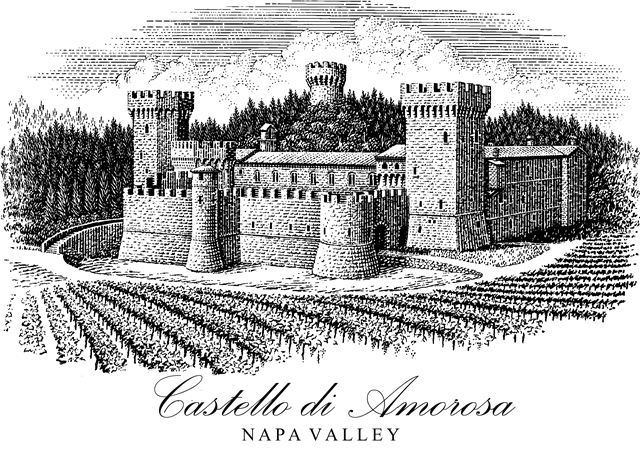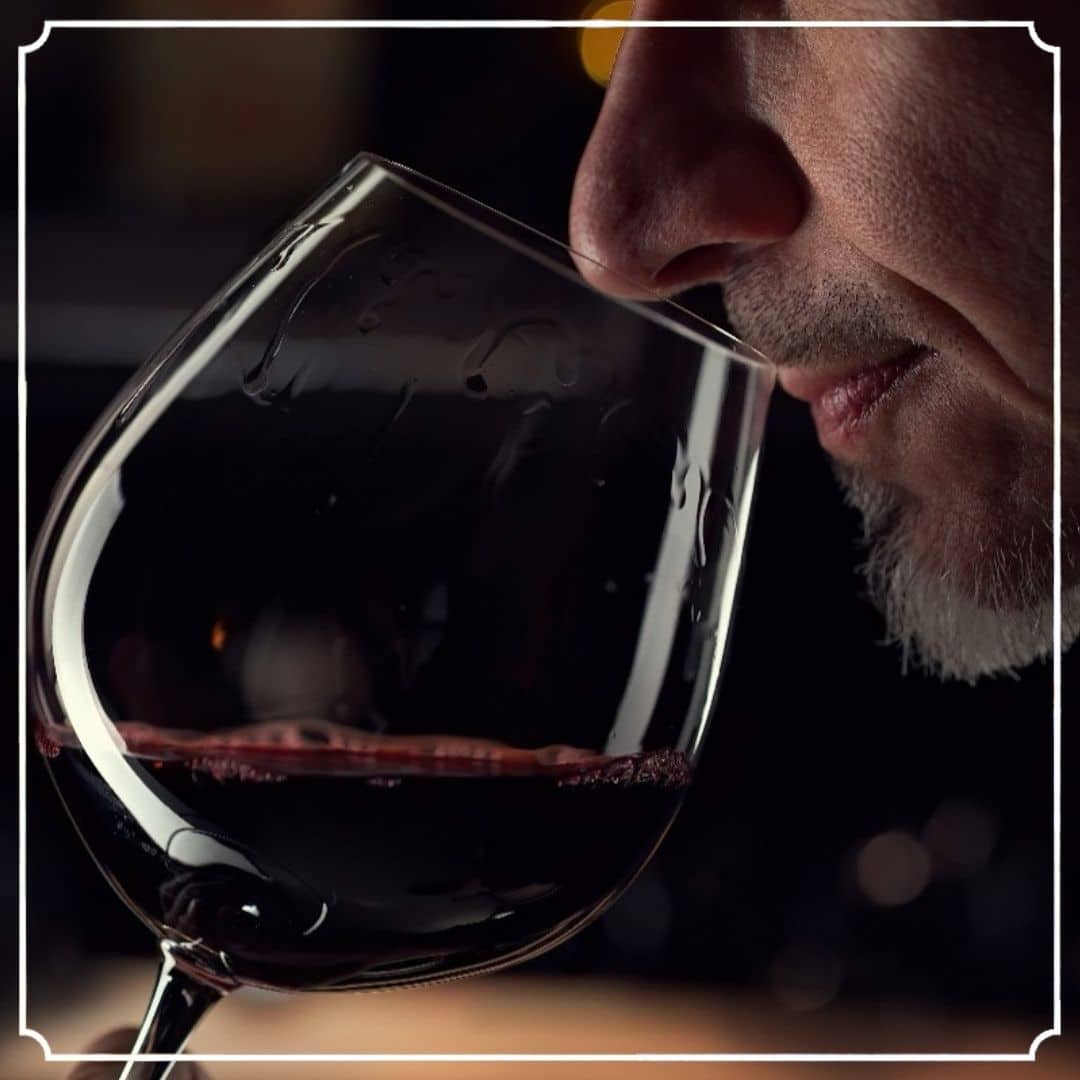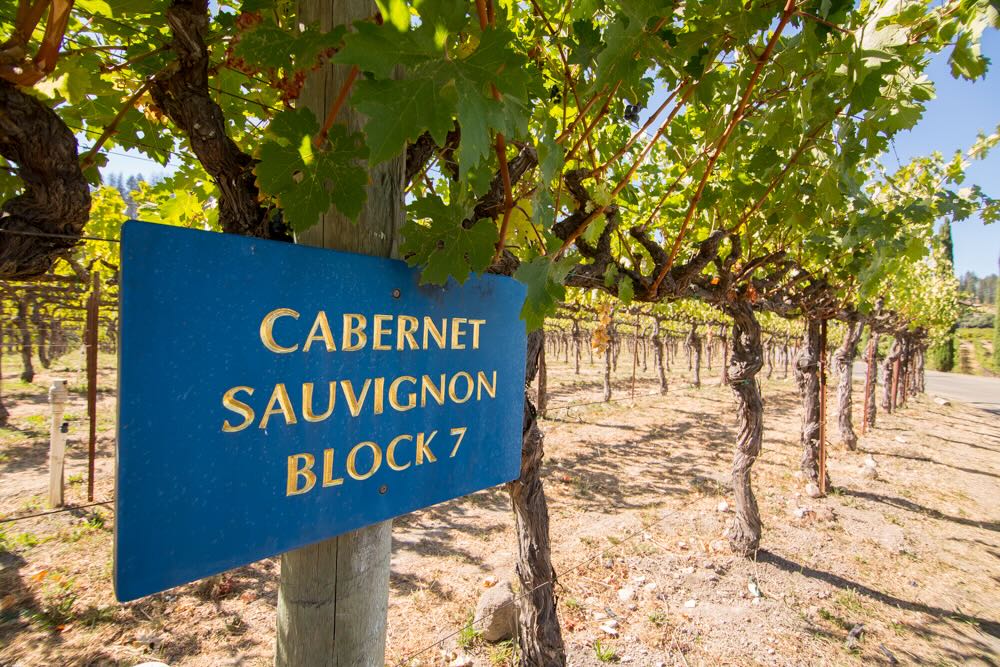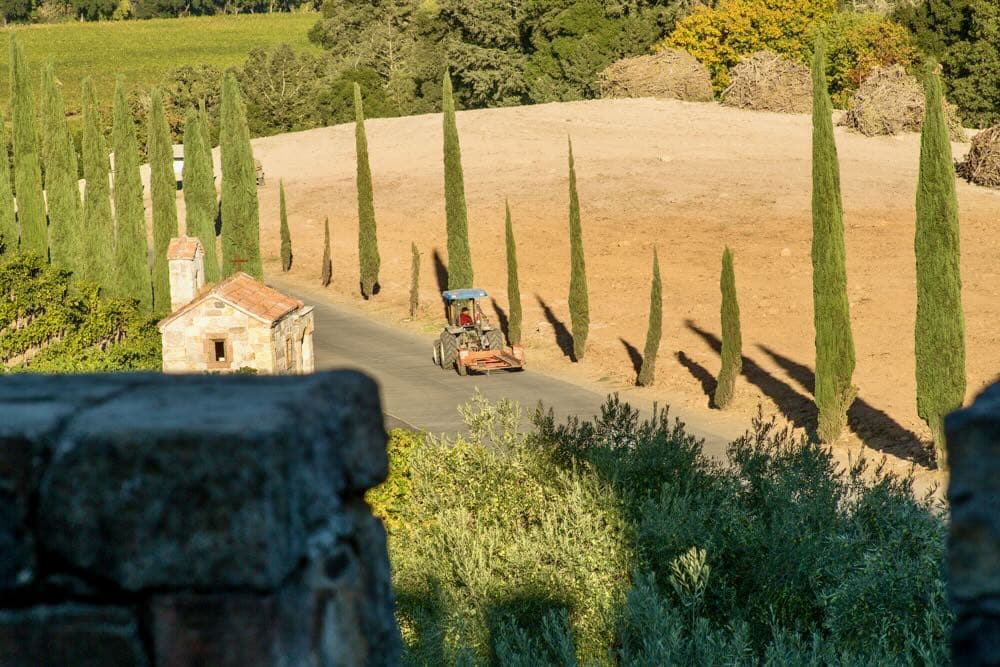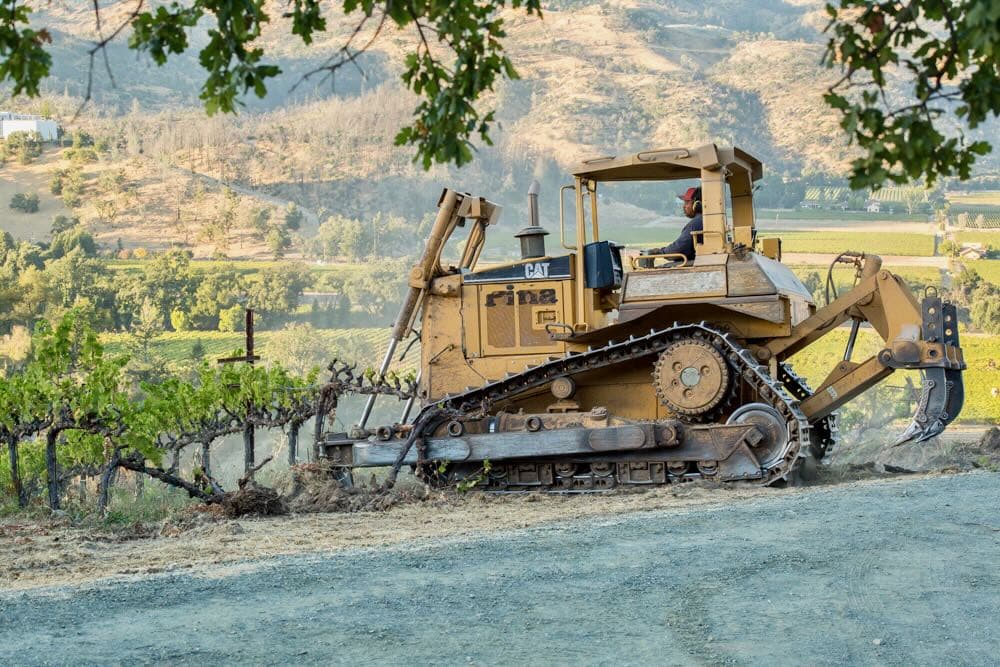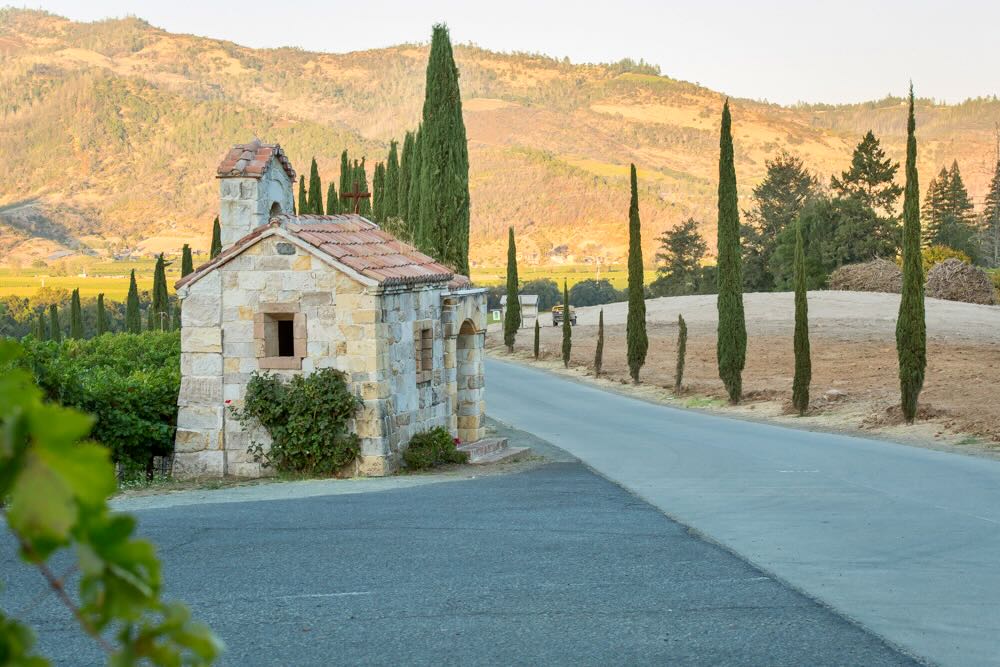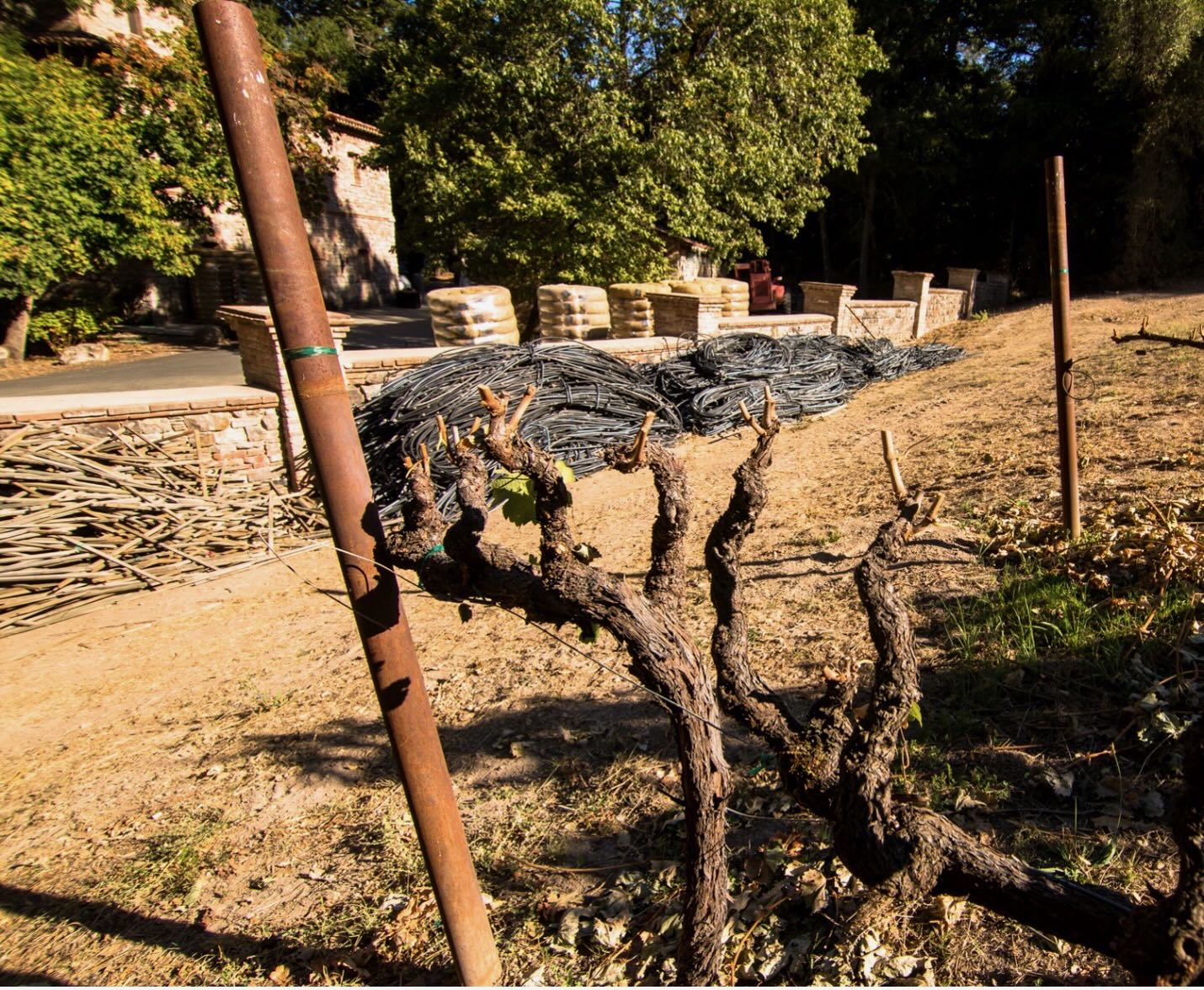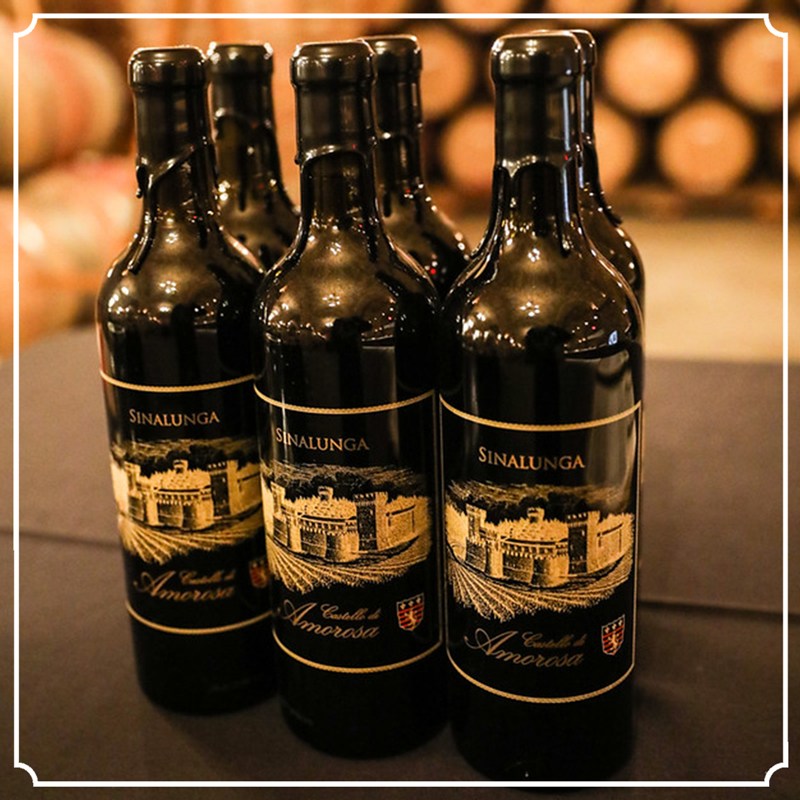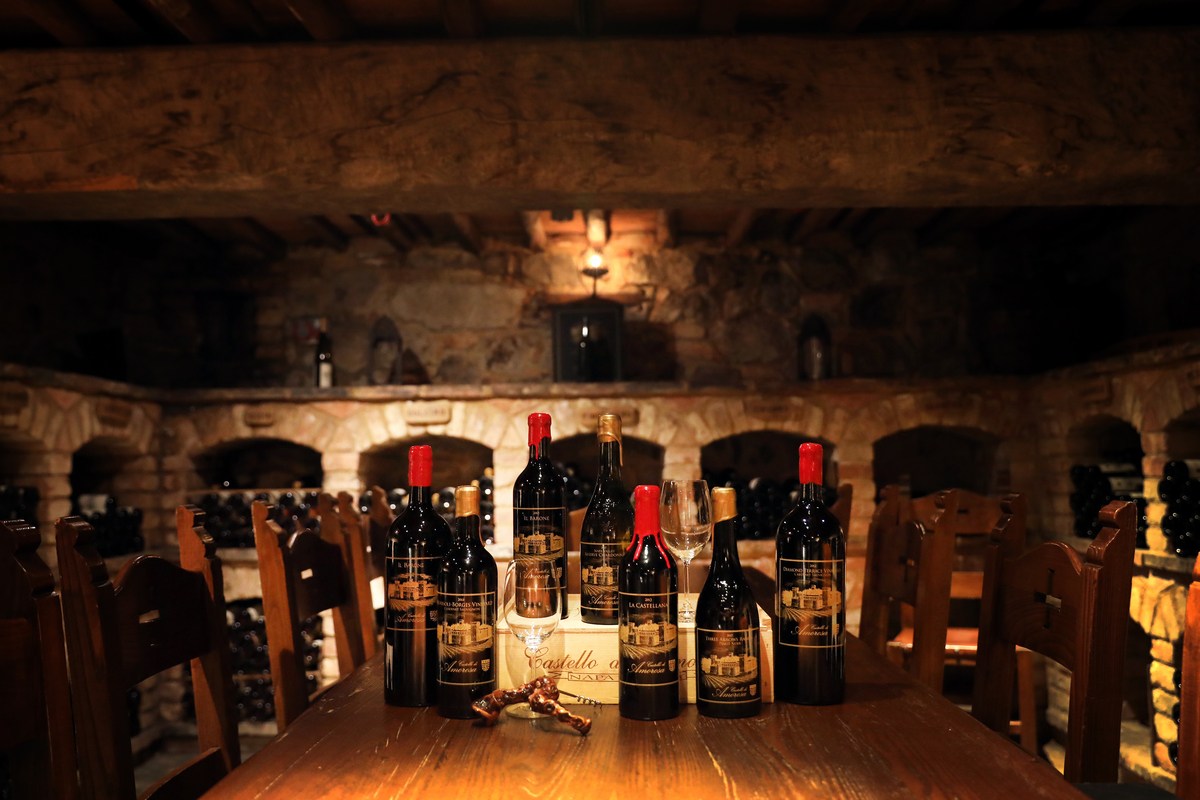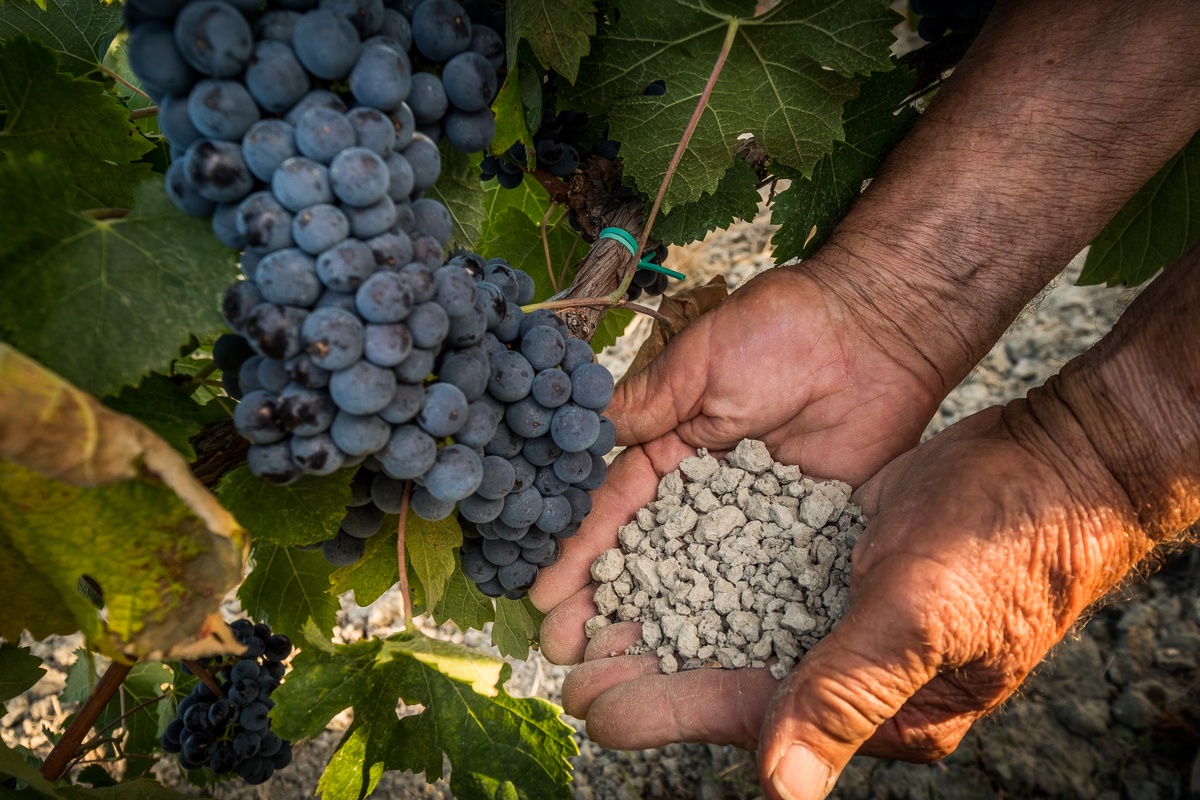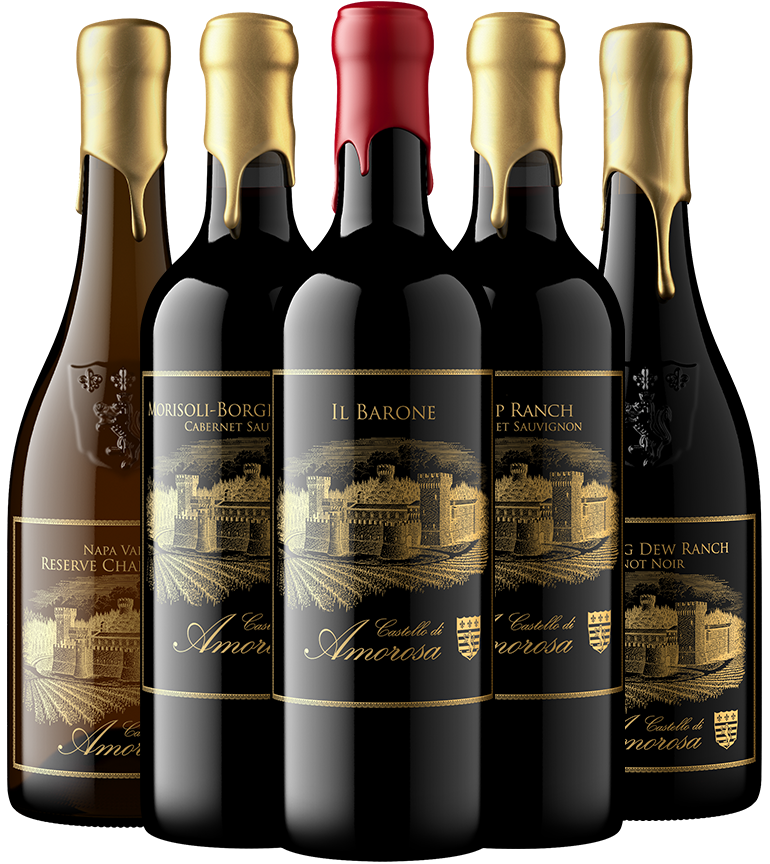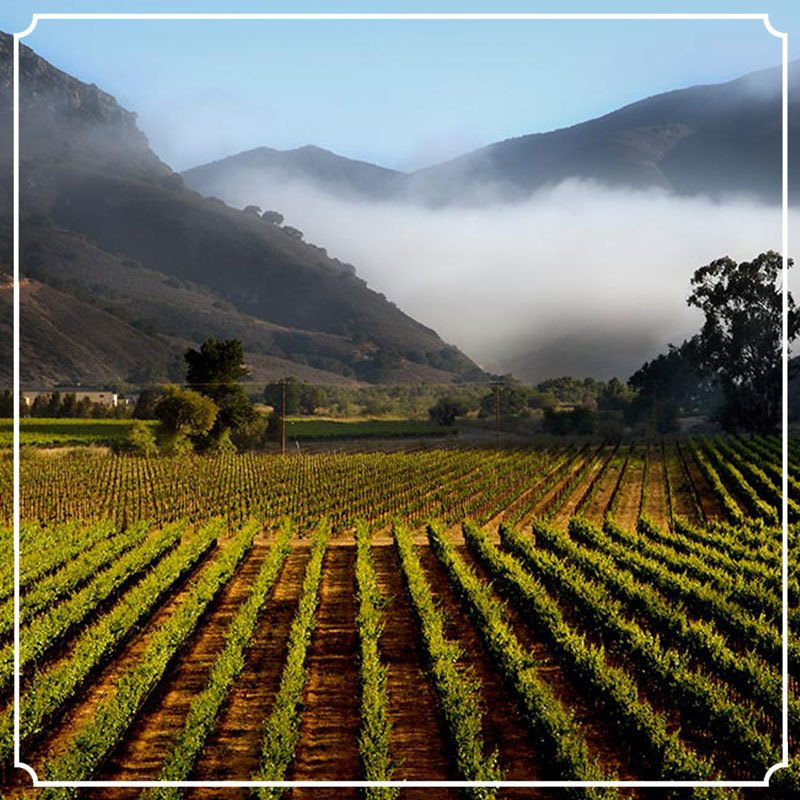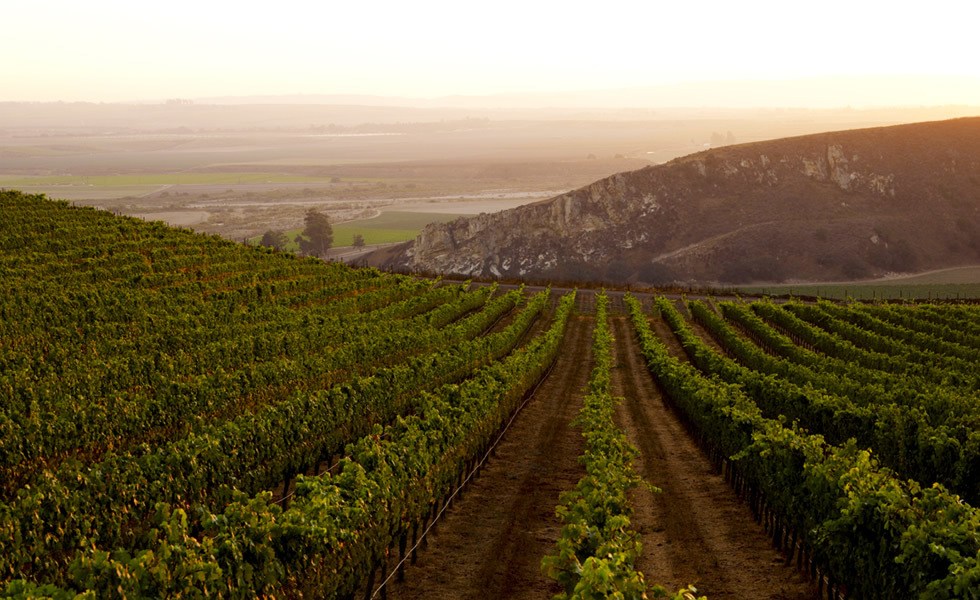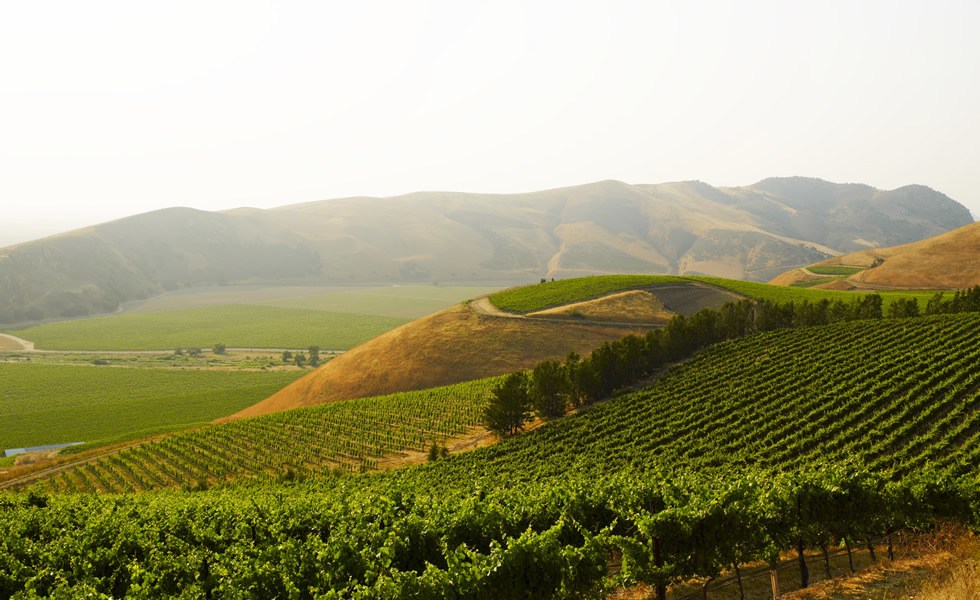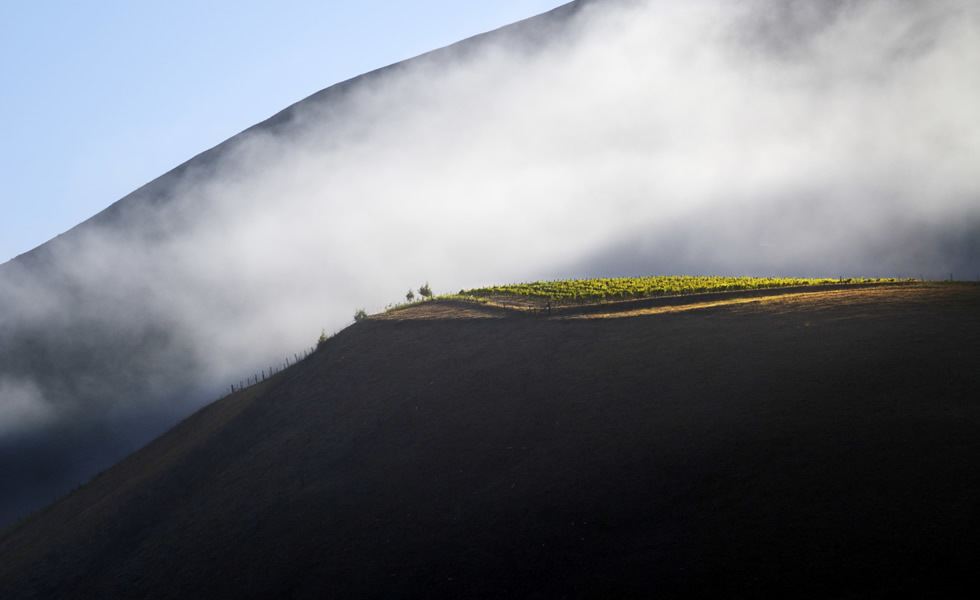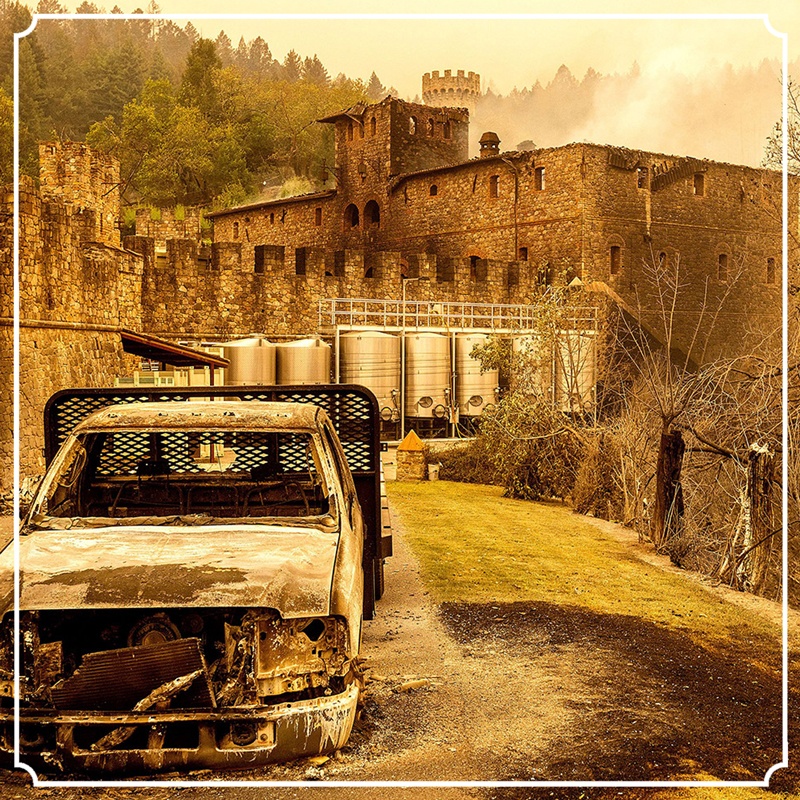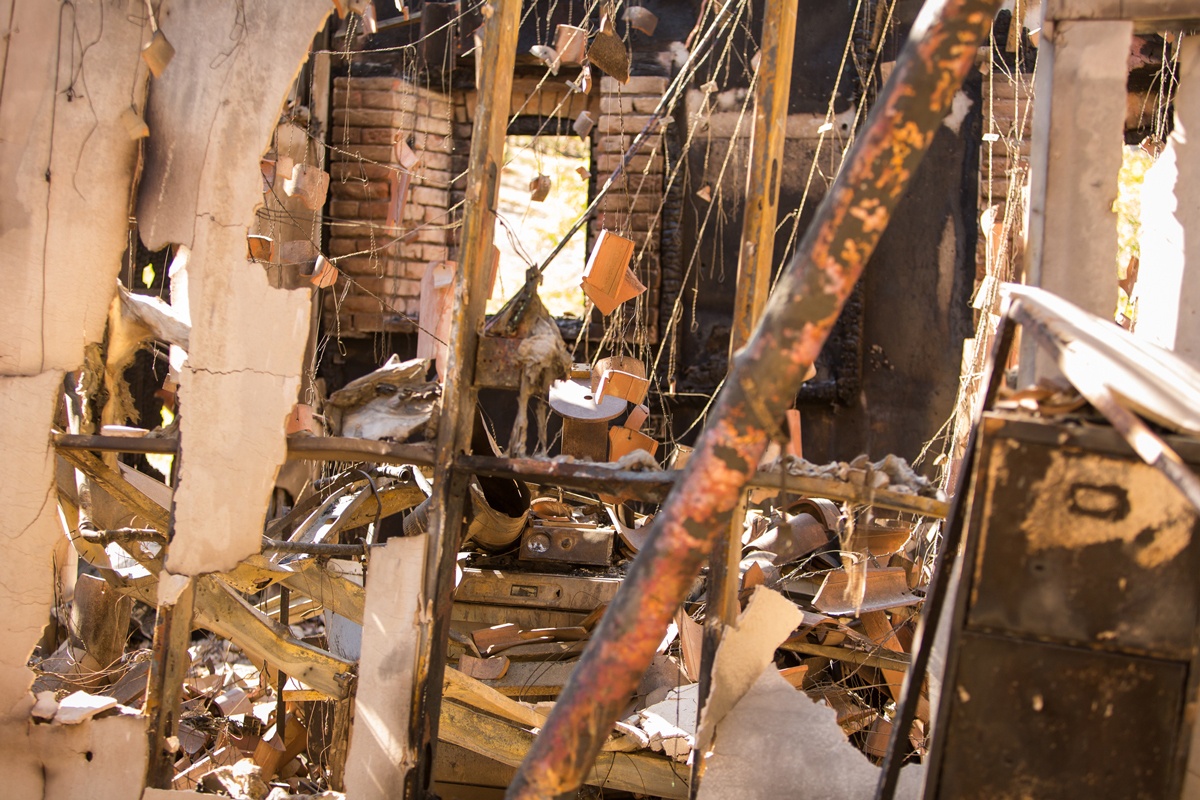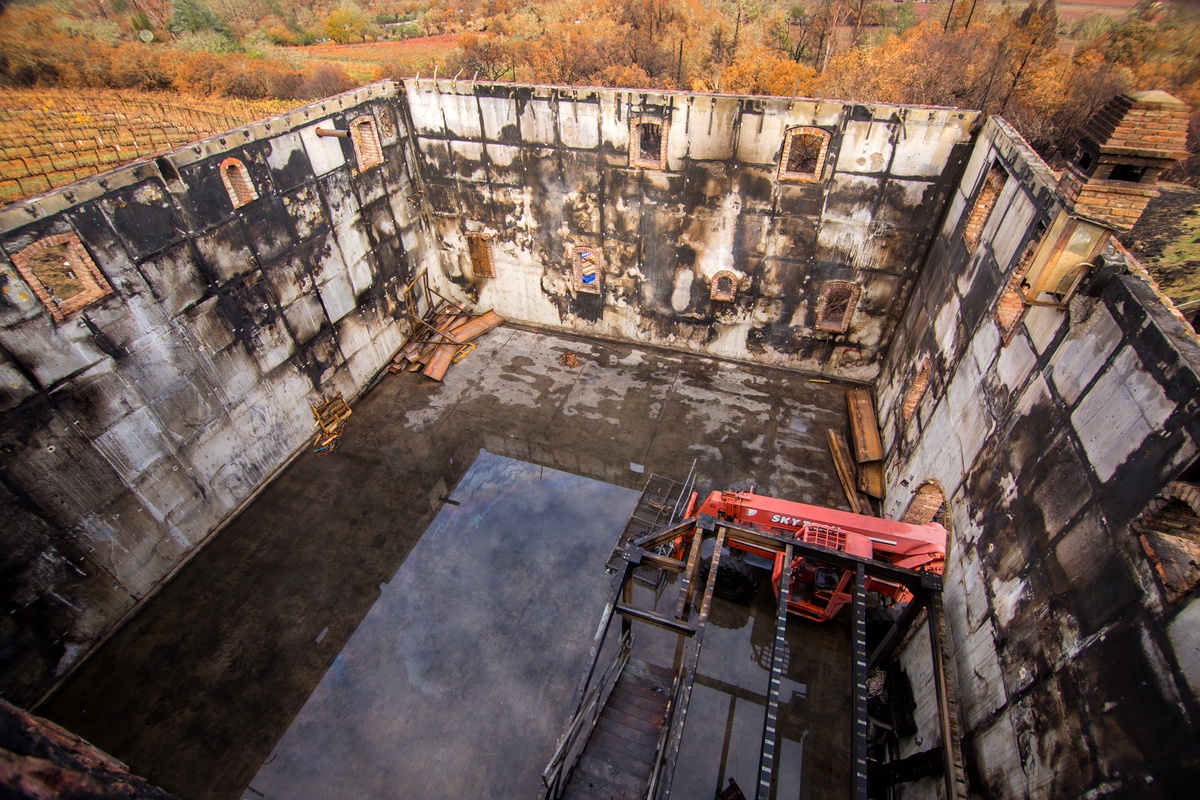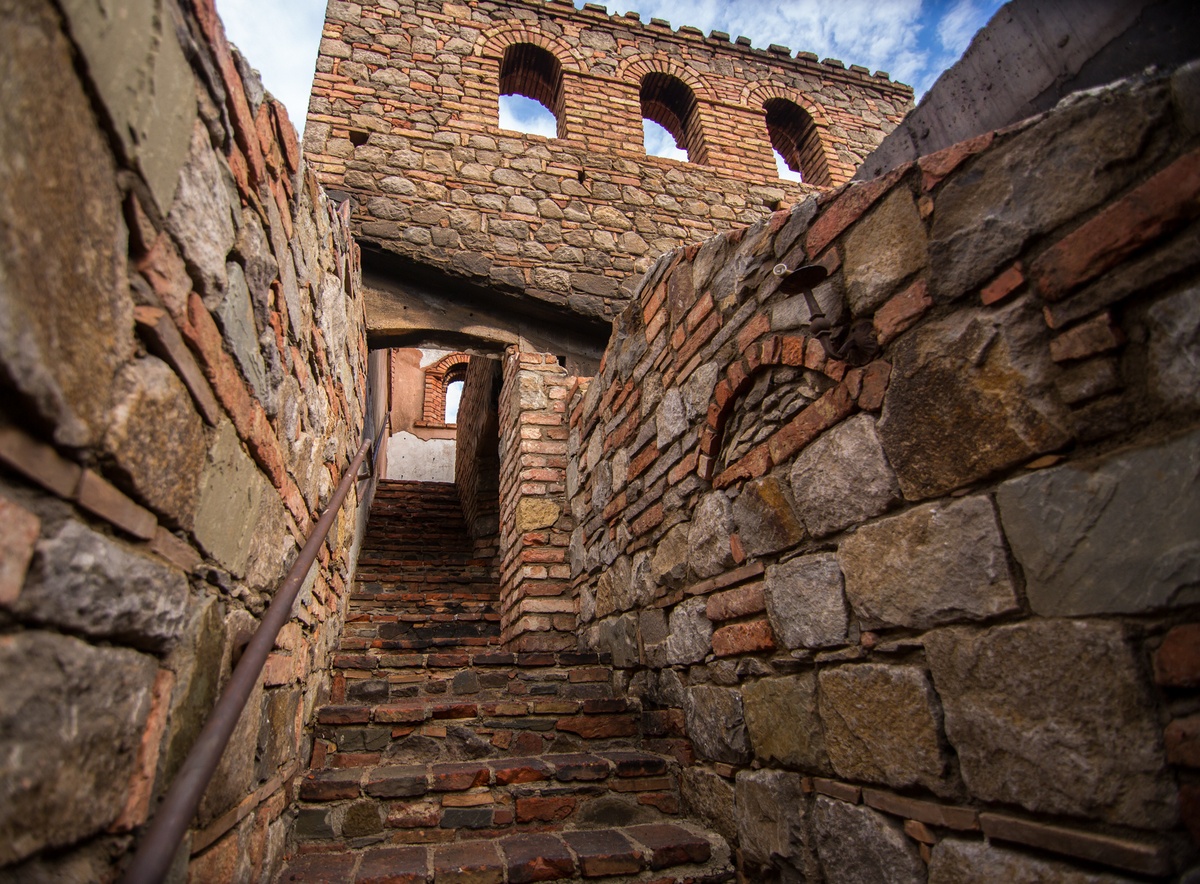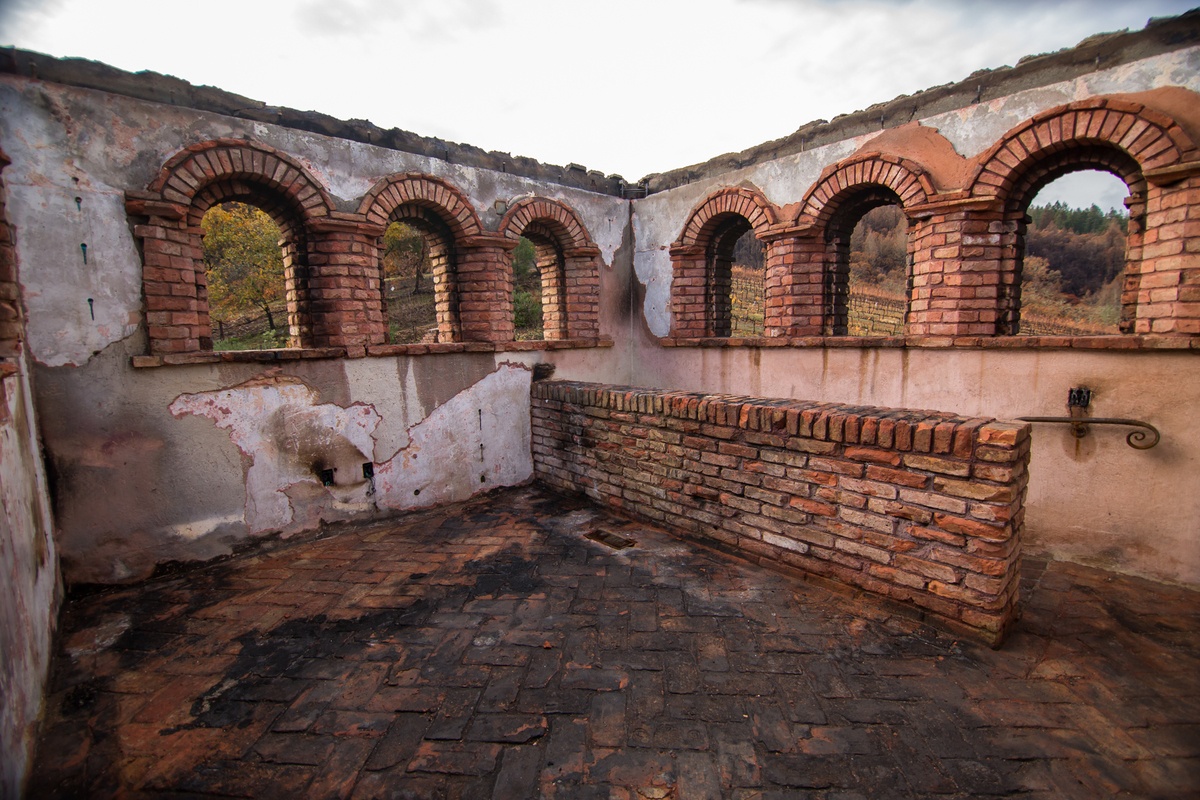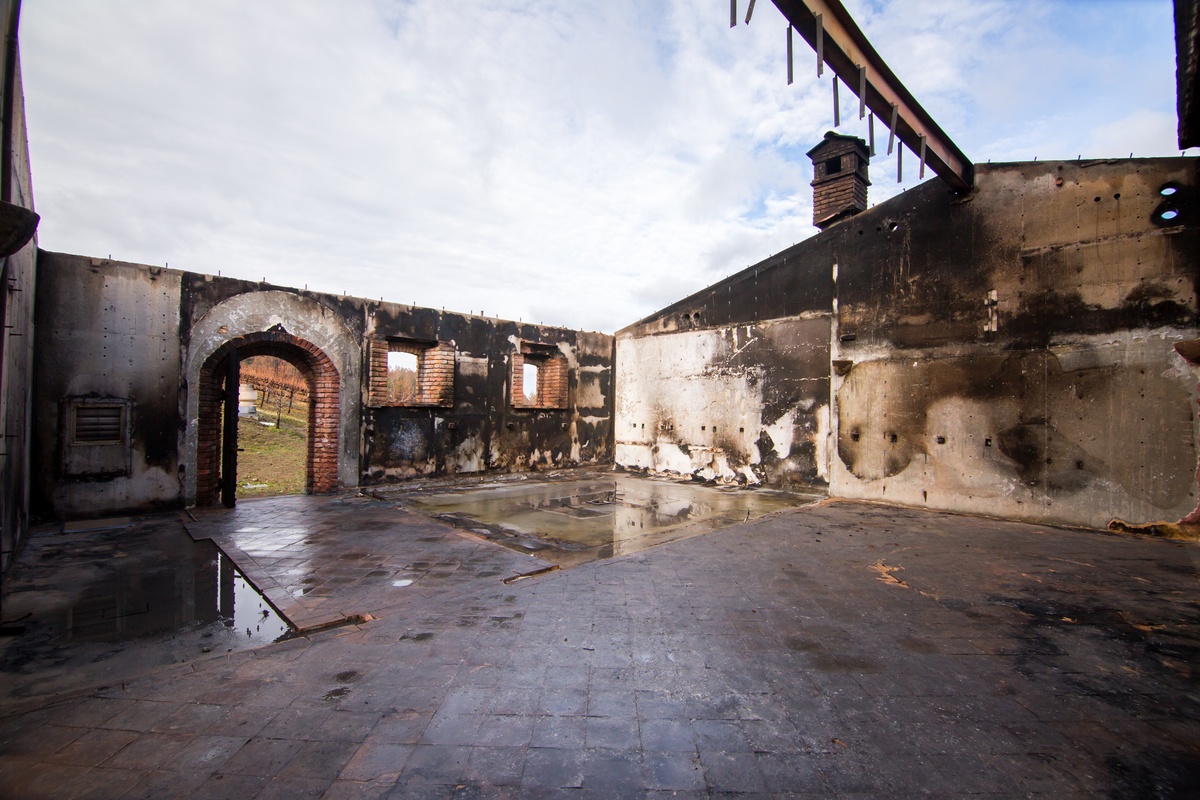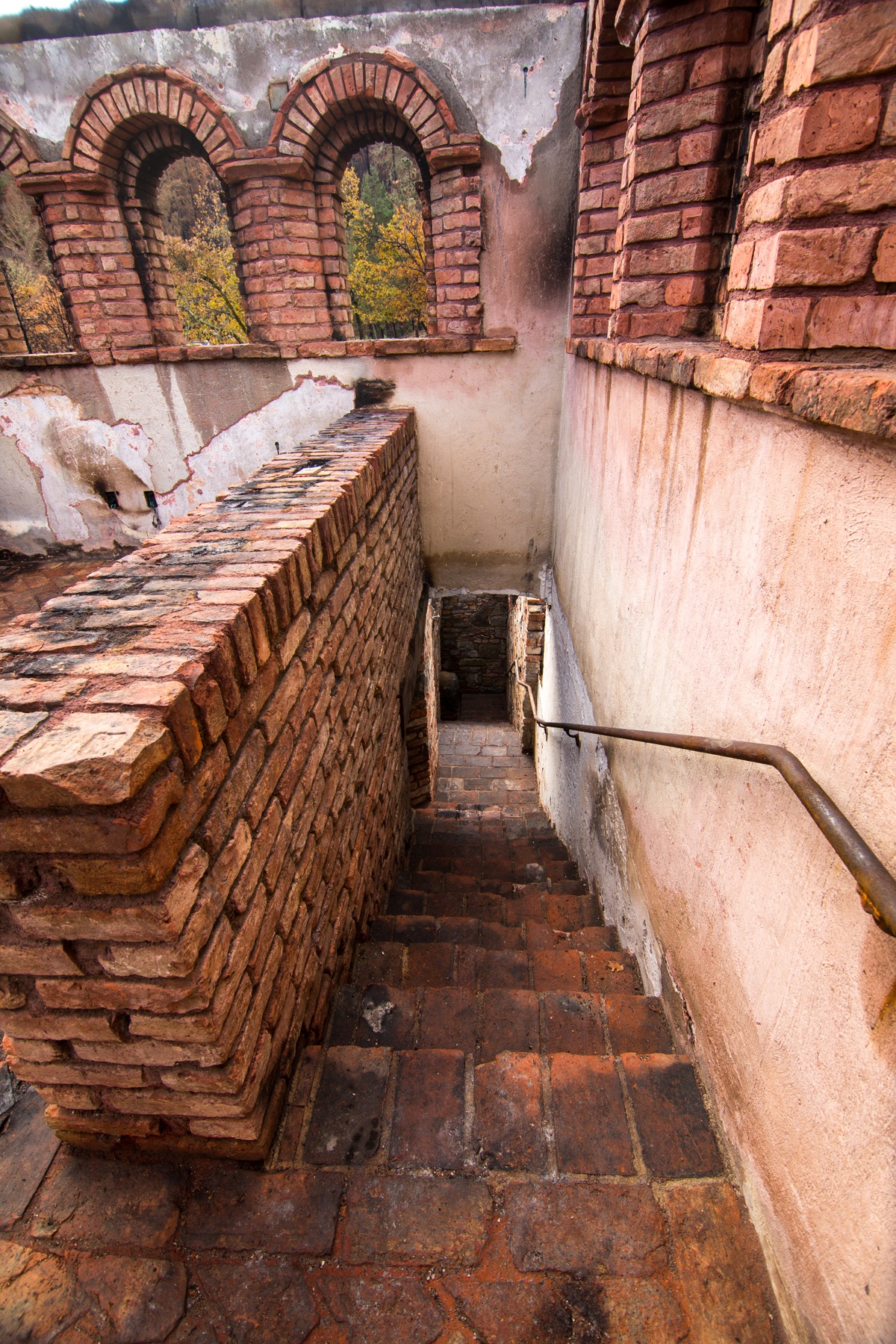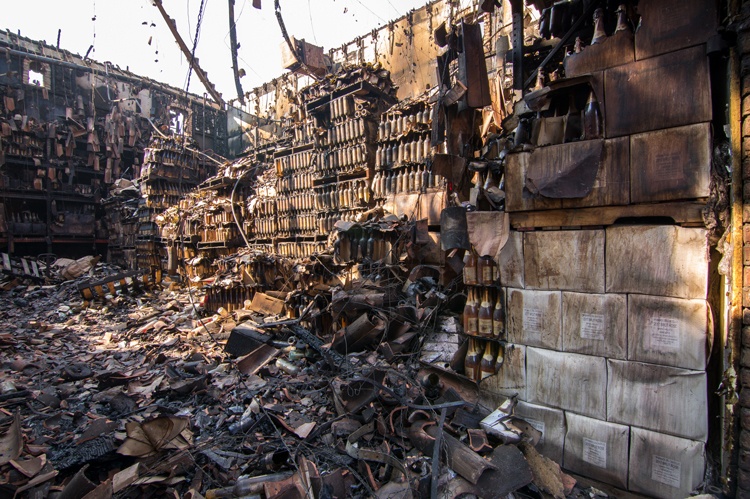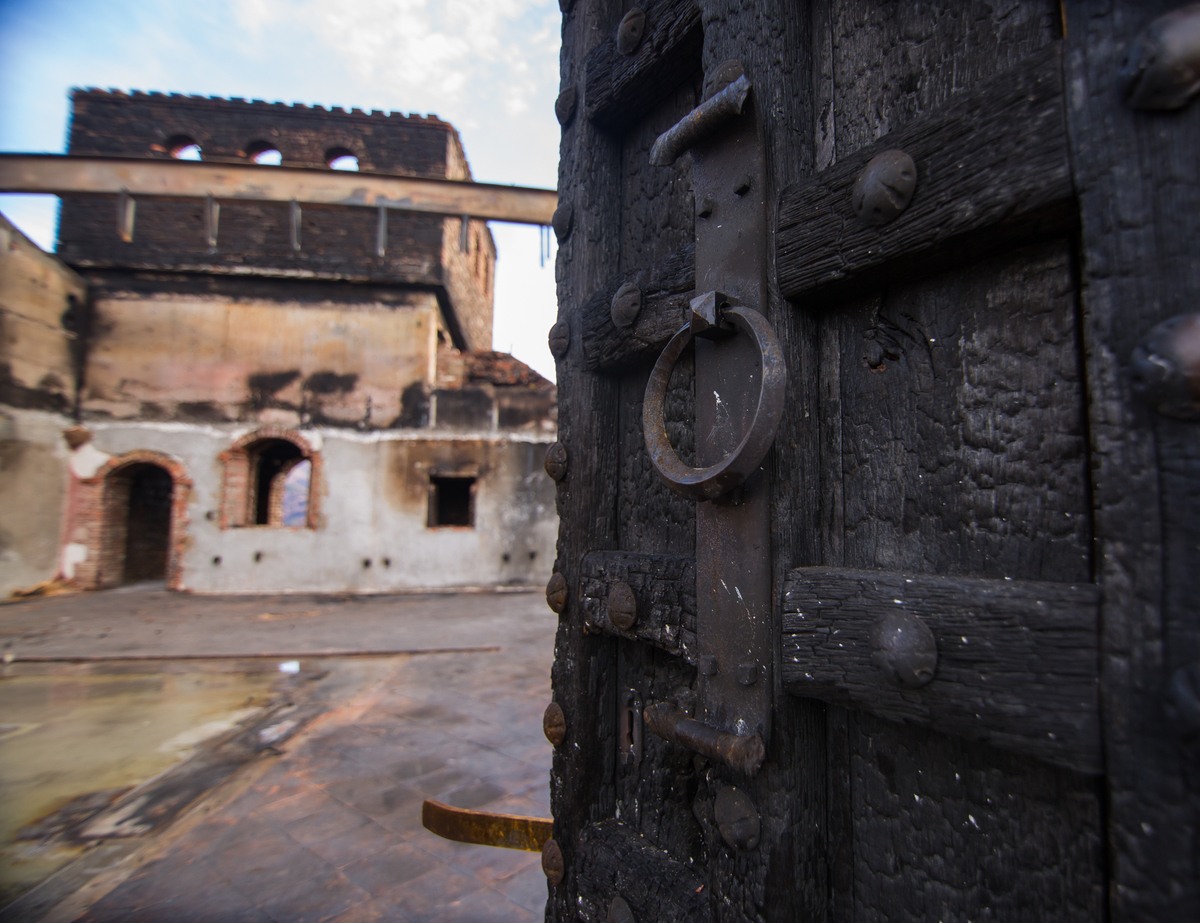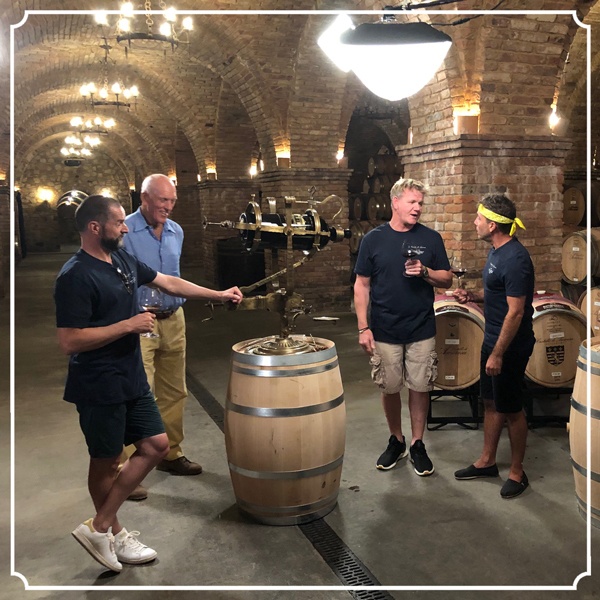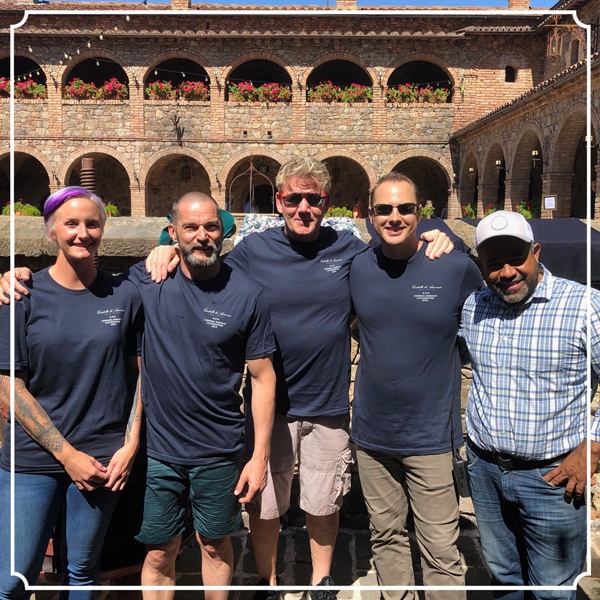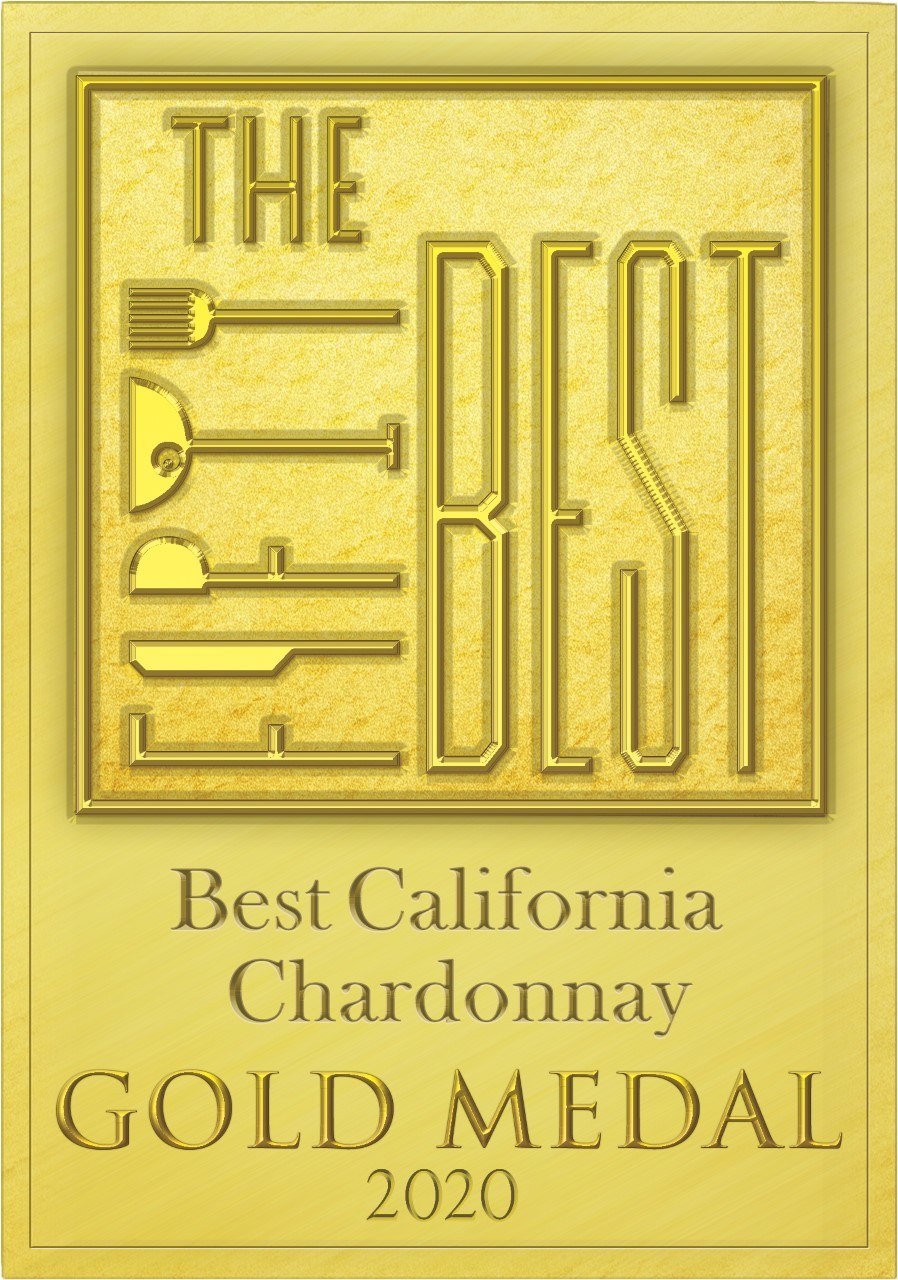Learn How to Taste Wine

Learn How to Taste Wine
A Beginner’s Guide to Wine Tasting: Sip, Savor, and Discover
Wine tasting might seem like an intimidating experience reserved for sommeliers or wine enthusiasts, but the truth is, anyone can learn to appreciate and enjoy wine. Whether you’re visiting Castello di Amorosa’s Napa Valley tasting room or exploring bottles at home, this guide, designed for beginners, will help you taste wine like a pro. Let’s begin to learn how to properly taste wine with these steps:
Step 1: Choose Your Wine
Before you begin, decide on the type of wine you’d like to taste. As a beginner, we’ll teach you how to taste good wine properly. You should first consider starting with a variety of wines – a crisp Pinot Grigio, a robust Napa Valley Cabernet Sauvignon, or a light and fruity Morning Dew Ranch Vineyard Pinot Noir. This variety of wines will help you identify your preferences.
Step 2: Set the Scene

The environment plays a significant role in wine tasting. Here are a few tips:
- Lighting: Ensure the area is well-lit so you can observe the wine’s color.
- Glasses: Use clear wine glasses to better appreciate the wine’s appearance and aroma.
- Temperature: Serve white wines chilled. For wines like Pinot Grigio, you may want to serve at 45 to 49 degrees Fahrenheit and allow the wine to warm up in the glass. Chill these wines in the refrigerator for about 1.5 hours. For lighter reds, like our Anderson Valley Pinot Noir or Voyager Vineyard Sangiovese, serve them at 54-60 degrees to highlight the evocative aromas and flavors inherent in this popular varietal. Chill for 45-60 minutes in the refrigerator prior to serving. Bolder, big reds like Castello’s Il Barone or Merlot should be served cooler than you’d think, around 60 to 65 degrees. This will allow these bigger wines to fully express their bold aromas, express their lush mouthfeel and highlight the nuanced flavors. Chill in the refrigerator for about 25 minutes in the refrigerator prior to serving.
- Neutral Palate: Avoid strong-smelling candles or food to ensure your senses are focused on the wine.
Step 3: Observe the Wine
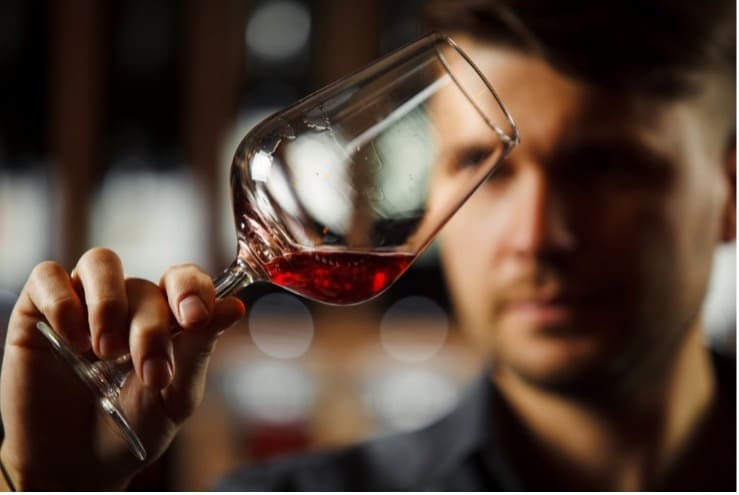
Pour a small amount of wine into your glass and take a moment to look at it:
- Color: Tilt the glass slightly and observe the wine against a white background. Is it pale or deep? Clear or cloudy?
- Legs: Swirl the wine gently. The streaks that form on the inside of the glass (known as legs) can indicate alcohol content; thicker legs often mean higher alcohol content.
Step 4: Smell the Wine
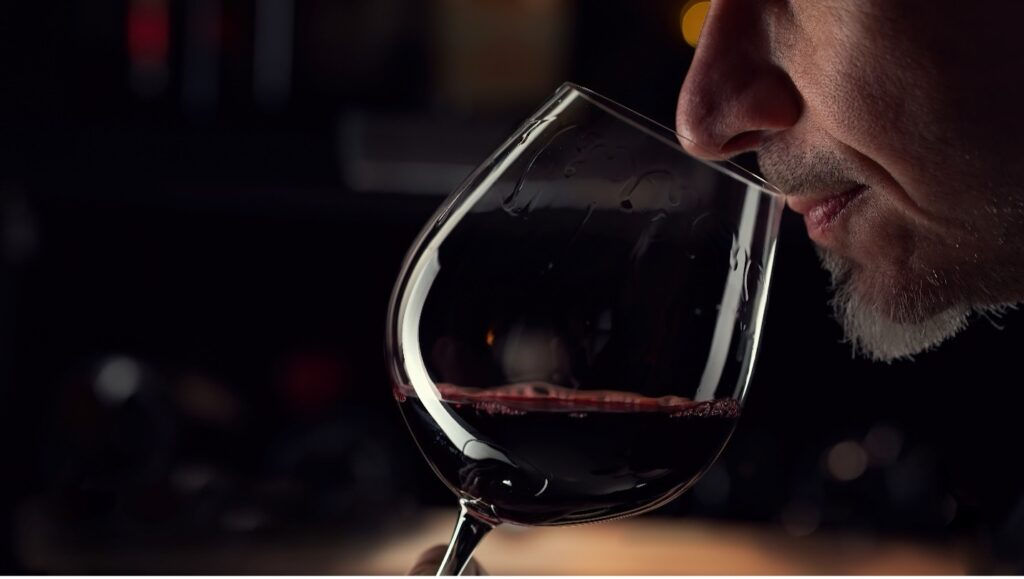
A significant portion of wine tasting involves your sense of smell. Swirl the wine to release its aromas, then:
- Take a Whiff: Place your nose over the glass and inhale deeply to experience all the aromas.
- Identify Aromas: Try to pick out specific scents. Do you smell fruits, spices, or earthy tones? Each wine has a unique bouquet that offers hints about its flavor profile. It might be helpful to close your eyes during this wine experience phase.
If you like wine with stunning aromas with beautiful flavors to match, you might want to include the Morning Dew Ranch Pinot Noir in your tasting experience. The estate vineyard is located in the Anderson Valley of California, a world-renowned area for growing Pinot Noir. Great aromas are born from vineyards in great growing regions. In the Morning Dew Ranch Pinot Noir, you might be wowed by the seemingly endless mingling of brambleberries, toasted sage and hints of clove. If you let the wine rest for a minute (breathe) the aromas will intensify and, perhaps, change slightly.
Step 5: Taste the Wine
Now for the fun part: tasting

- Take a Sip: Take a small sip and let the wine coat your tongue.
- Hold: Hold the wine in your mouth for a few seconds to fully experience its texture and flavors.
- Identify Flavors: Note the initial taste, the mid-palate flavors, and the finish. Is it sweet, acidic, or tannic? Can you taste berries, citrus, oak, or chocolate?
- Swallow or Spit: If you’re at a wine tasting, feel free to spit into the provided containers to avoid overconsumption. Repeat this process a few times and experience the differences in taste.
If one of your tastings happens to be our 2018 Napa Valley Cabernet Sauvignon, you might get aromas of toasty black and red fruit, black cherry and, perhaps, a little leather. On the palate, you’ll experience a medium to full-bodied wine with a round, mouth-filling texture. The tannins are soft, and the flavors might include dark chocolate with hints of dried herb. We hope you enjoy this beautiful creation grown in Napa Valley vineyards and crafted by Brooks Painter and Peter Velleno, our winemakers!
Step 6: Record Your Impressions
Keep a notebook or use a wine-tasting app to jot down your thoughts. Include details like the wine’s name, vintage, region, and your personal tasting notes of color, body, smell and taste on the palate and after the finish. Over time, this record will help you refine your palate and discover your preferences.
Step 7: Pair with Food
Now for the Fun Part
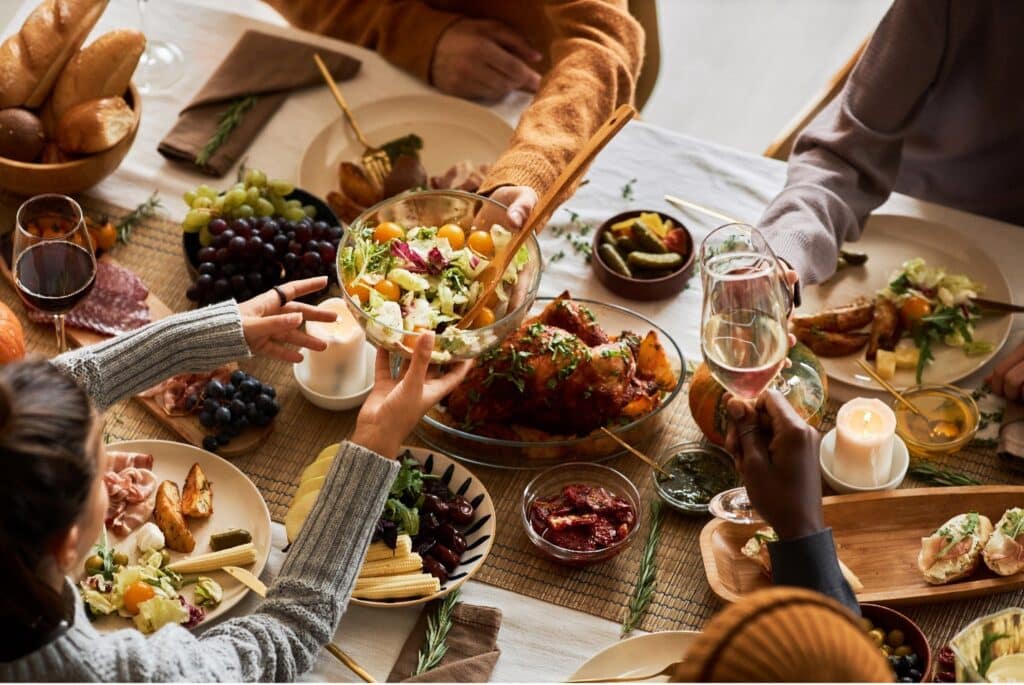
Experimenting with food pairings can elevate your wine experience. A few classic combinations include:
- White Wine: Pairs well with seafood, poultry, and creamy pasta dishes.
- Red Wine: Complements red meats, hearty stews, and aged cheeses.
- Sparkling Wine: Excellent with salty snacks, fried foods, and light desserts.
Final Tips for Beginners
- Stay Open-Minded: Don’t dismiss a wine after one sip. Some flavors develop as you taste. The bottom line is taking your time to allow the wine to open in the glass and for your palate to adjust. This could take several minutes and a few sips to properly taste the wine. We highly recommend, to enhance your wine tasting experience, to smell the aromas of the wine before taking a sip.
- Ask Questions: If you’re at a vineyard or wine shop, don’t hesitate to ask for recommendations or information about the wines.
- Practice: The more you taste, the more confident you’ll become in identifying and describing wines.
Wine tasting is an enjoyable journey that combines art, science, and personal preference. By following these steps on how to taste wine for beginners, you’ll build a foundation for appreciating wine and discovering your unique palate. So, open that bottle of your favorite Castello di Amorosa wine, grab a glass, take a sip, and let your wine adventure begin!
Wine tasting is an enjoyable journey that combines art, science, and personal preference. By following these steps, you’ll build a foundation for appreciating wine and discovering your unique palate. So, open that bottle of your favorite Castello di Amorosa wine, grab a glass, take a sip, and let your wine adventure begin!
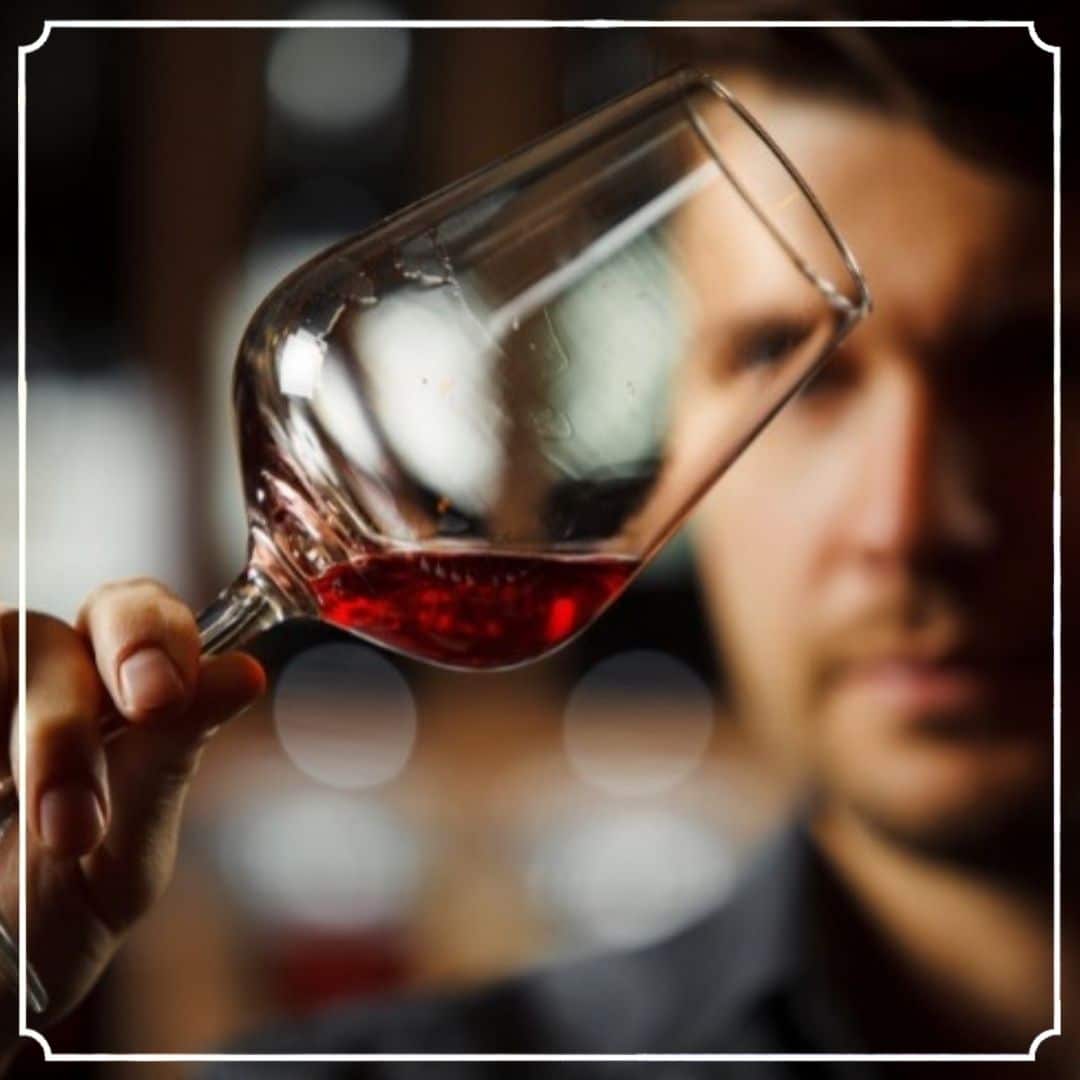
Jim Sullivan
Jim Sullivan, Vice President of Public Relations and Marketing spearheads Castello di Amorosa’s publicity and marketing initiatives.
With over 20 years of marketing, public relations and business development experience with professional motorsports teams and in a variety of healthcare organizations in Southern California, Jim first joined Castello di Amorosa in 2008 as Public Relations and Marketing Manager.
An avid cyclist, Jim fell in love with wine and wineries while exploring the Washington State countryside. His love of wine was reinforced during subsequent trips to the Napa Valley to visit family.
Jim holds an MBA from the University of Redlands and a Bachelor of Science from Central Washington University. He resides in Calistoga, Calif.
Operation Vine Removal and Replanting

Operation Vine Removal and Replanting
Castello di Amorosa, nestled in the hills just south of Calistoga in the northern end of Napa Valley, has long been a symbol of tradition, craftsmanship, and excellence. The Castello, built by pioneer winemaker and winery owner, Dario Sattui, has been recognized as an architectural masterpiece that combines centuries-old medieval material with state-of-the-art winemaking equipment.
For over 25 years, lush rows of Cabernet Sauvignon, Merlot, Sangiovese, Malbec, Primitivo and Petit Verdot vines surrounding the Castello have produced some of the region’s most coveted wines.
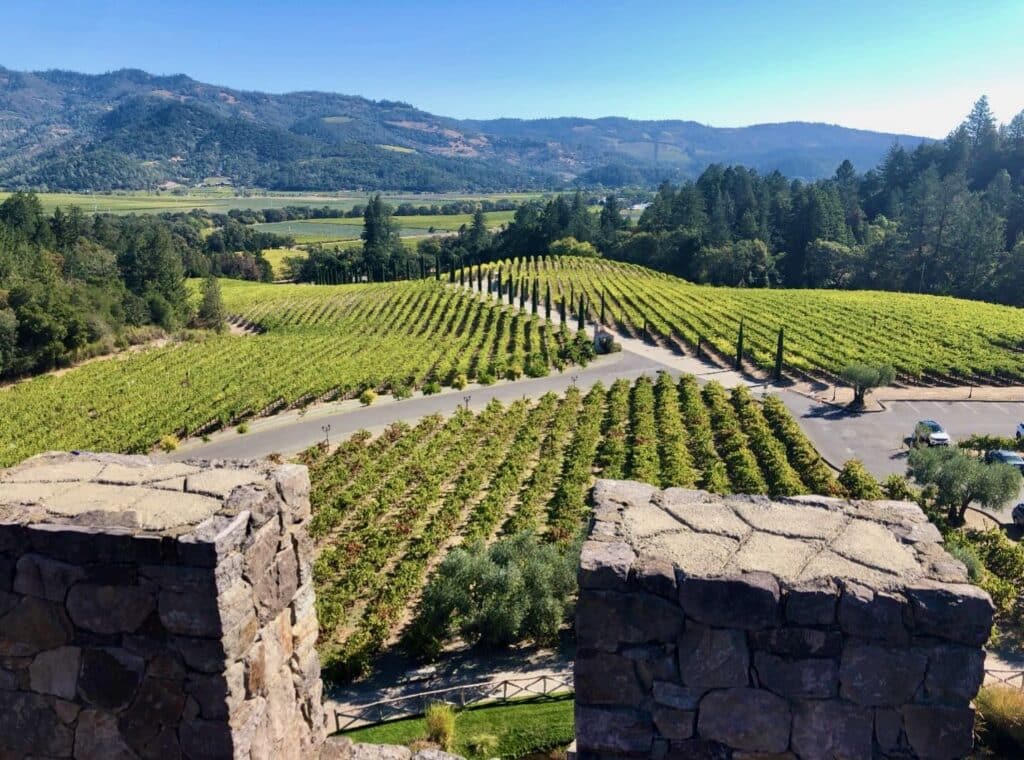
But change is in the air around the Castello. Starting in late September 2024, the vineyard will undergo a remarkable transformation—its iconic vines, which have given so much over the years, are being removed.
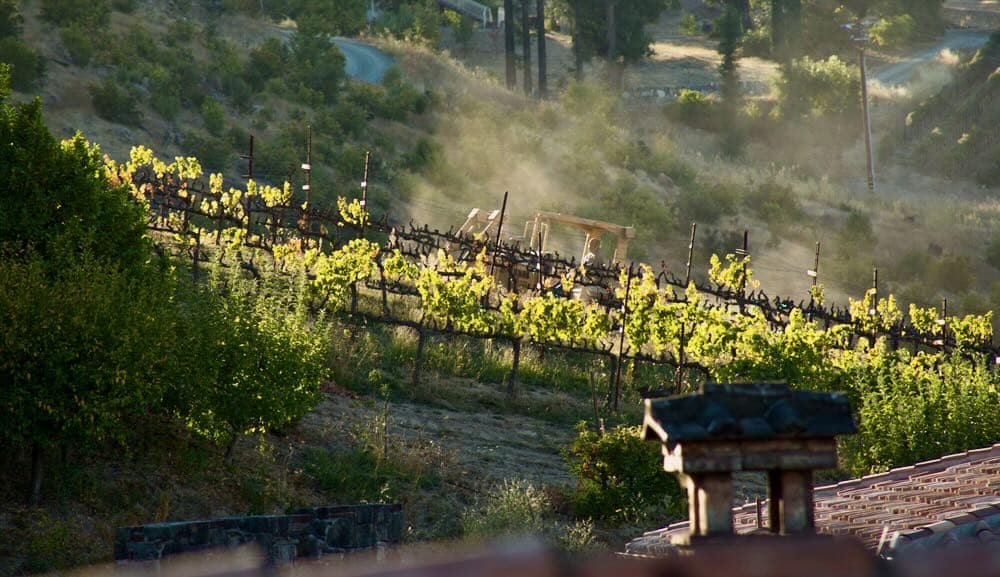
Time is of the essence. Erosion control ordinances require the vines to be removed and the erosion control to be implemented before October 15 and no work can be done until the following April when planting will begin. Vineyard blocks 5, 7 and 10 will be planted in April of 2025. The investment in vine removal and replanting is $1,000,000 for the ten acres of blocks being replanted.
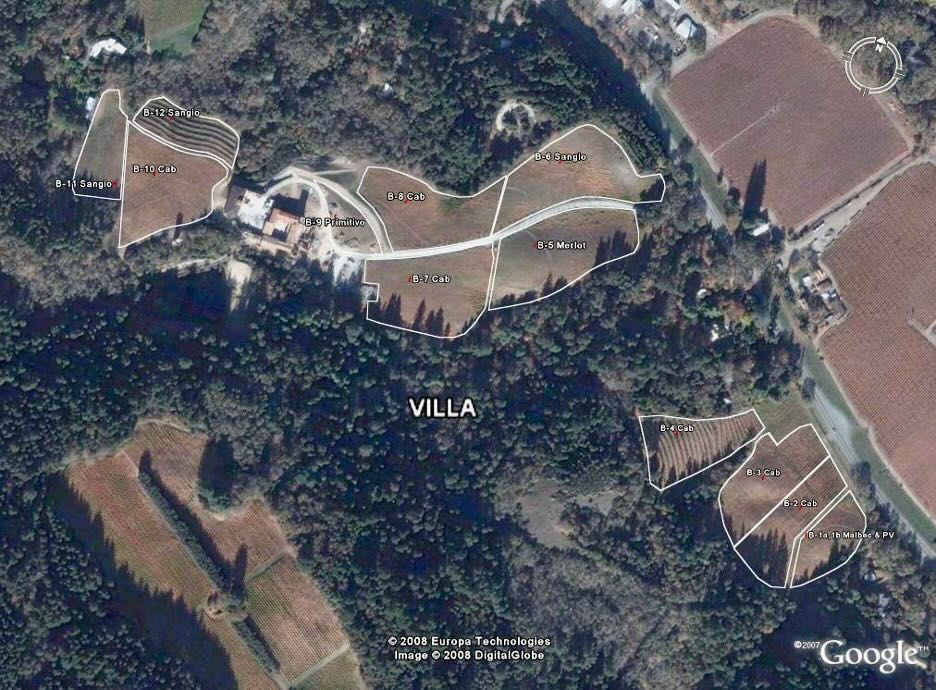
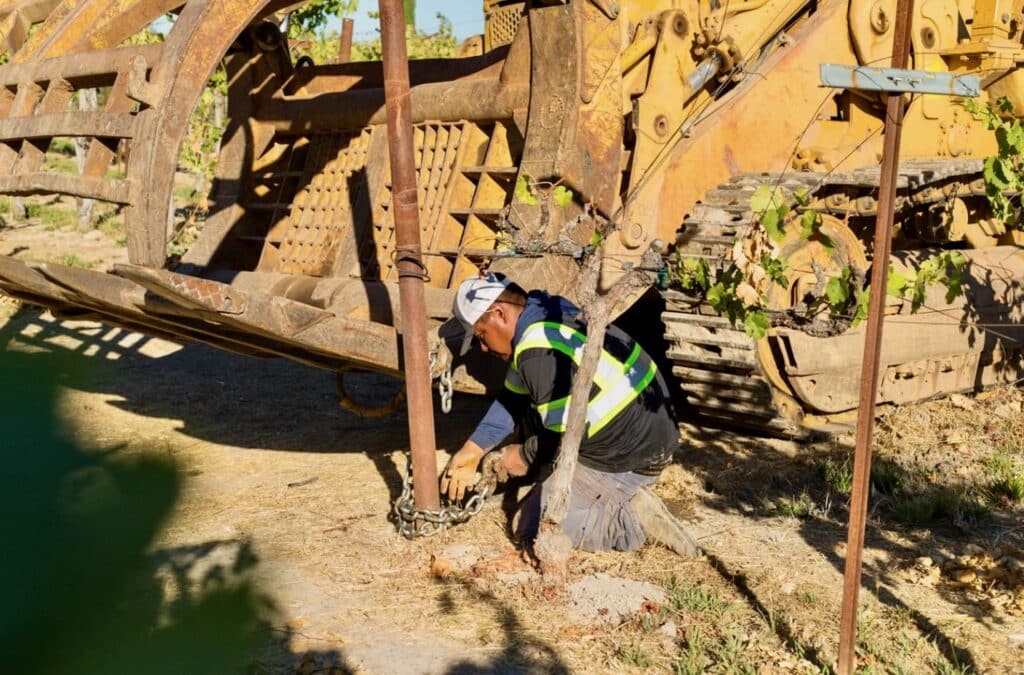

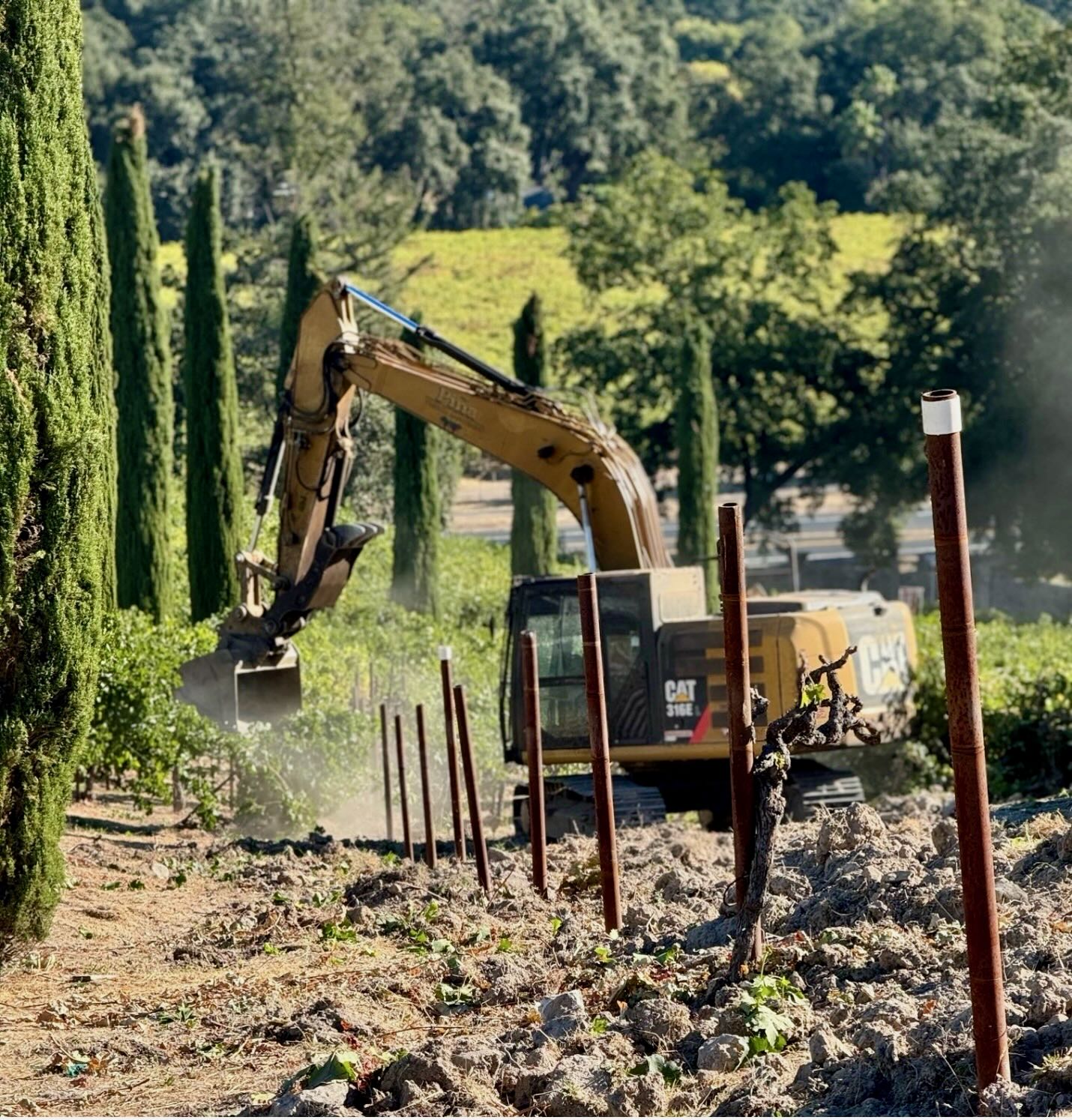
Over time, even the best vines begin to show their age. Though the wines from Castello di Amorosa have remained stellar, the vineyard’s team, led by visionary vintner, Dario Sattui, Castello President, Georg Salzner and Director of Winemaking, Brooks Painter, knew it was time to embrace renewal. “It’s a bittersweet moment as I can vividly recall the first planting of the Castello vineyards,” Sattui said, “but if we want to continue producing the highest quality wines for the next generation, we must replant. The terroir is the same, but the potential for what we can achieve is limitless.”
As we await the perfect moment to harvest, the work in our vineyards never ceases. One of the most important tasks at hand is ensuring our vineyards continue to thrive and produce exceptional fruit for future vintages. While many factors can influence the yield of grapes, the longevity of the vineyard depends heavily on the strategic replanting and care of the vines themselves.
As Dario Sattui explains, “Vines, like everything in nature, have a life cycle. While some vines can live for over 100 years, most of our vines reach their peak around 25 to 30 years. At this stage, their ability to produce optimal fruit diminishes, and that’s when we know it’s time to invest in the future of our vineyard.”
For Castello di Amorosa, this means carefully replanting select blocks of the vineyard, including blocks 5, 7 and 10, with Cabernet Sauvignon in 2025. The decision to replant isn’t made lightly, as it requires patience and foresight. By removing entire blocks, we have the unique opportunity to introduce new, disease-resistant rootstocks and clones of Cabernet Sauvignon that will elevate our winemaking legacy. “Replanting is a chance to secure our future,” Dario adds, “to ensure that Cabernet Sauvignon remains a cornerstone of our vineyards, delivering the quality and character our wines are known for.”
This process is about more than simply pulling out old vines; it’s about maintaining a balance between the vineyard’s current productivity and long-term prosperity. While pulling full blocks means those areas won’t yield grapes for a few years, the investment we’re making today is what will ensure Castello di Amorosa remains at the forefront of Napa Valley winemaking.
Gallery
Click on the images below to see them in high definition
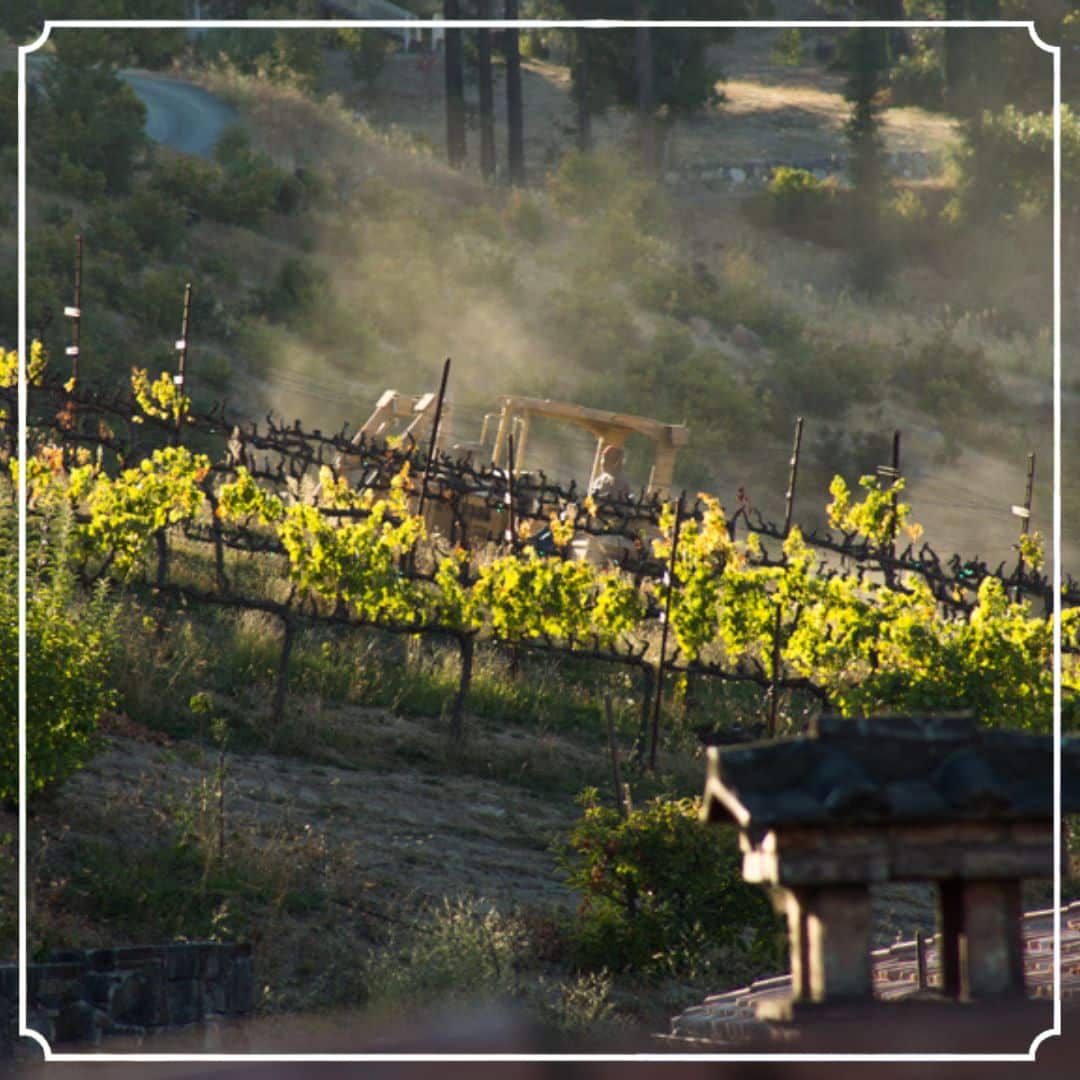
Jim Sullivan
Jim Sullivan, Vice President of Public Relations and Marketing spearheads Castello di Amorosa’s publicity and marketing initiatives.
With over 20 years of marketing, public relations and business development experience with professional motorsports teams and in a variety of healthcare organizations in Southern California, Jim first joined Castello di Amorosa in 2008 as Public Relations and Marketing Manager.
An avid cyclist, Jim fell in love with wine and wineries while exploring the Washington State countryside. His love of wine was reinforced during subsequent trips to the Napa Valley to visit family.
Jim holds an MBA from the University of Redlands and a Bachelor of Science from Central Washington University. He resides in Calistoga, Calif.
Overlooking the Napa Valley: The Melanson Vineyard

Overlooking the Napa Valley:
The Melanson Vineyard
Melanson Vineyard is one of a handful of exceptional vineyards that share an enchanted slope of land nestled among the rugged eastern ridges of the Napa Valley. It’s called Pritchard Hill. Most vineyards in the Napa Valley are based in one of the 16 American Viticultural Areas, or Sub-AVAs of the Napa Valley. Melanson Vineyard and 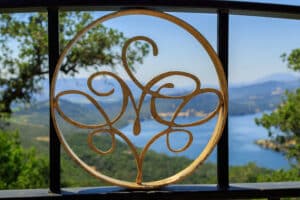 Pritchard Hill are not in a Sub-AVA but the Pritchard Hill growing region is arguably one of the top growing regions in all of Napa Valley. Sitting in peaceful isolation on a very steep, west-facing, boulder-strewn hillside, this 1,300 ft, 10.5-acre vineyard site enjoys late afternoon sun and remarkable views of Lake Hennessey below. Vineyard owner and wine grape grower Greg Melanson is serious about growing world-class Cabernet Sauvignon.
Pritchard Hill are not in a Sub-AVA but the Pritchard Hill growing region is arguably one of the top growing regions in all of Napa Valley. Sitting in peaceful isolation on a very steep, west-facing, boulder-strewn hillside, this 1,300 ft, 10.5-acre vineyard site enjoys late afternoon sun and remarkable views of Lake Hennessey below. Vineyard owner and wine grape grower Greg Melanson is serious about growing world-class Cabernet Sauvignon.
“As a master winemaker, Castello’s Brooks Painter understands you need great grapes to make a truly great wine,” said Greg Melanson. “The Cabernet Sauvignon flavors that are truly unique to Pritchard Hill are in every glass of Castello di Amorosa’s Melanson Vineyard Cabernet,” he added.
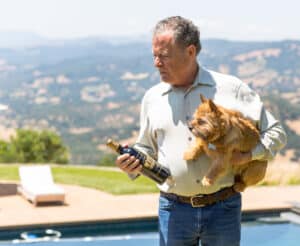
Several years ago, Castello di Amorosa began partnering with Greg Melanson and his meticulous vineyard manager, who carefully tends to the vineyard. The vineyard is planted in Sobrante loam soils, a clay loam mix, fractured volcanic material, and large volcanic rocks. Loam soils in general, and specifically Sobrante loam which allows the water to drain creating vine stress and mature flavor development in the grapes. The vineyard is known for its very small, intensely flavored grapes with thick skins. Melanson says the yields vary depending on what Mother Nature provides. Each vintage is different, and the yield is highly dependent on the weather.
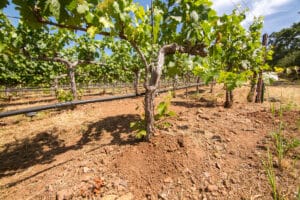 “I have a penchant for high-elevation vineyards,” said Brooks Painter, Director of Winemaking for Castello di Amorosa and V. Sattui Winery in St. Helena. “And upon first glance at this vineyard, I was immediately impressed with the intensity of the sunshine and the limiting growth potential of the vineyard soil.”
“I have a penchant for high-elevation vineyards,” said Brooks Painter, Director of Winemaking for Castello di Amorosa and V. Sattui Winery in St. Helena. “And upon first glance at this vineyard, I was immediately impressed with the intensity of the sunshine and the limiting growth potential of the vineyard soil.”
The Melanson Vineyard on Pritchard Hill sits well above the fog line which translates to plenty of sunshine to ripen the grapes. When tasting this Cabernet Sauvignon from this mountain terroir, you’ll immediately be struck by the soft, round mellowness of the wine. Its warm velvety nature with refined tannins on the palate continues to a long, complex finish that is full of fresh, dark fruit.
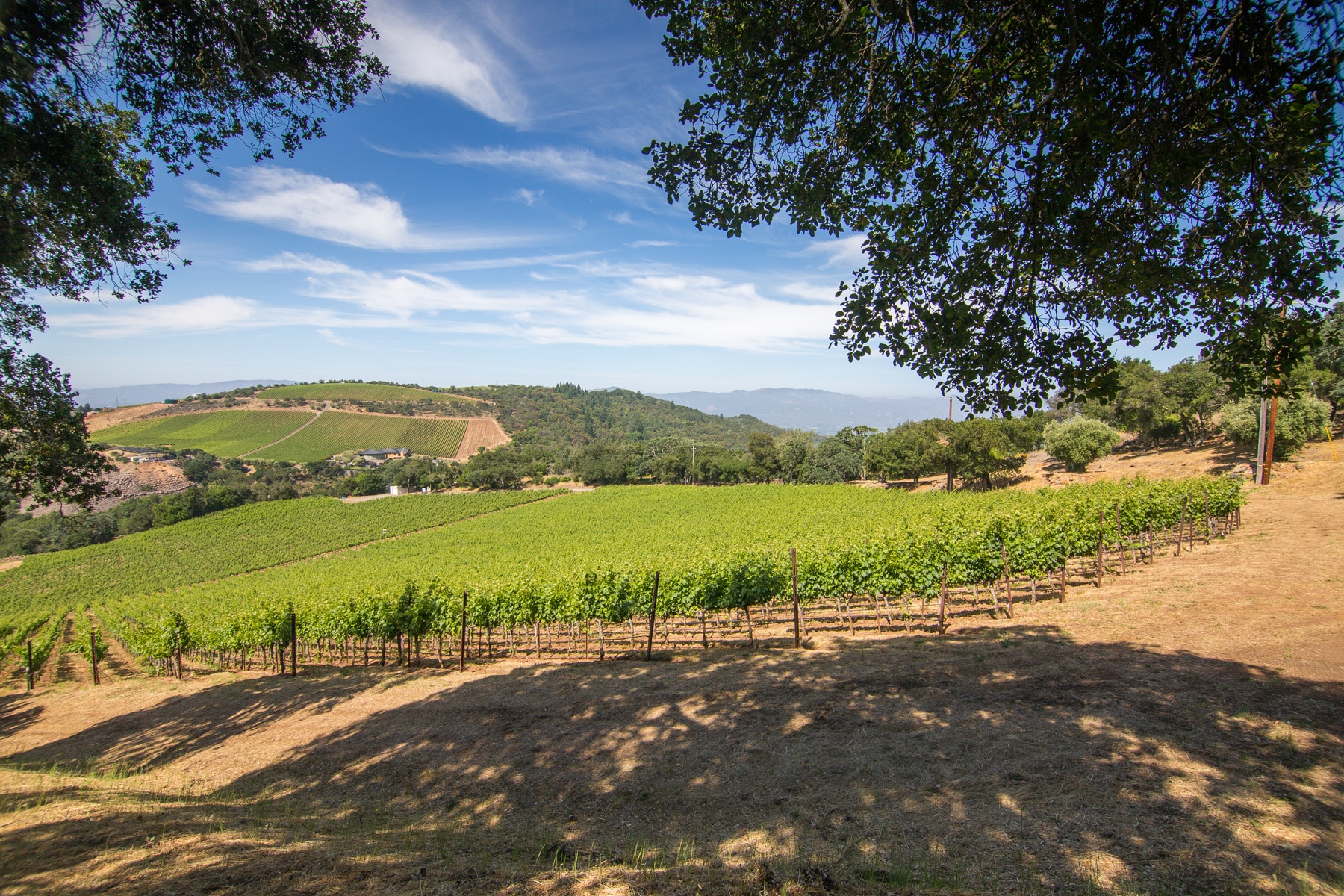
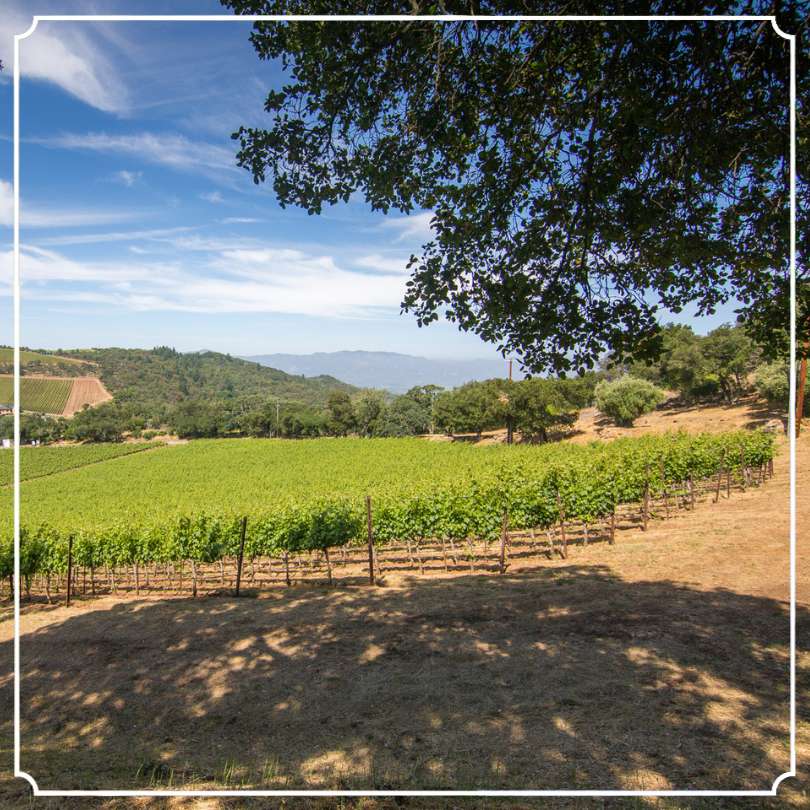
Jim Sullivan
Jim Sullivan, Vice President of Public Relations and Marketing spearheads Castello di Amorosa’s publicity and marketing initiatives.
With over 20 years of marketing, public relations and business development experience with professional motorsports teams and in a variety of healthcare organizations in Southern California, Jim first joined Castello di Amorosa in 2008 as Public Relations and Marketing Manager.
An avid cyclist, Jim fell in love with wine and wineries while exploring the Washington State countryside. His love of wine was reinforced during subsequent trips to the Napa Valley to visit family.
Jim holds an MBA from the University of Redlands and a Bachelor of Science from Central Washington University. He resides in Calistoga, Calif.
Reserve Wines

Jim Sullivan
Jim Sullivan, Vice President of Public Relations and Marketing spearheads Castello di Amorosa’s publicity and marketing initiatives.
With over 20 years of marketing, public relations and business development experience with professional motorsports teams and in a variety of healthcare organizations in Southern California, Jim first joined Castello di Amorosa in 2008 as Public Relations and Marketing Manager.
An avid cyclist, Jim fell in love with wine and wineries while exploring the Washington State countryside. His love of wine was reinforced during subsequent trips to the Napa Valley to visit family.
Jim holds an MBA from the University of Redlands and a Bachelor of Science from Central Washington University. He resides in Calistoga, Calif.
Reserve Wines
Have you ever seen the word Reserve or even the term, Napa Valley Reserve on a bottle of wine? The bottle might even display such phrases as, Private Reserve, Special Reserve or Proprietor’s Reserve. In some wine growing regions of the world, like Italy and Spain, for example, where the Italian Reserva and the Spanish Reserva are legally defined and indicate wines are aged longer (could be a combination of oak barrels and bottle) than regular bottlings. In all cases, reserve wines of this distinction are highly sought after and are largely considered collector wines.
While there is no legal definition of a reserve wine in the U.S., generally reserve wine bottlings usually consist of wines considered by the winemaker to be of greater quality that can age gracefully, many years longer than a regular bottling of the same variety. Usually selected from special wine barrel lots that merit additional aging and, in some cases, complete vineyards or select rows of the vineyard will be designated for the winery’s reserve program. It is common for select vineyards to have certain areas where the growing conditions are slightly better than other sections. This could be due to the slope of vineyard in that section which allows for better sunlight on the vines or creates better soil drainage.
Additionally, in vineyards near hillsides, it is common for alluvial soil to accumulate in sections of the vineyard. Alluvial soil is a rich, nutrient-dense composition of gravel, clay and silt that improves the richness in the soil and supports healthy vines and their complex and deep root structure. These types of soils contribute greatly to the diversity of wines produced from vineyards with alluvial soils and results in Napa Valley wines with a softness and elegance.
In the Napa Valley, a region home to many collectable wines, reserve bottlings consist of wines that are considered by many winemakers to be finer and have greater aging potential than their regular bottling of the same collectable napa wines. The most common wine that garners the distinction of being called a top collectable wine is Cabernet Sauvignon or Cabernet Reserve as it’s coined by many wine connoisseurs.
At Castello di Amorosa, winemakers Brooks Painter and Peter Velleno have crafted a complete line up of Napa Valley Reserve wines in their Napa in Reserve portfolio. Our portfolio also includes fine wine selections from the Anderson Valley, the Green Valley of the Russian River Valley and Mendocino AVA- some of the top AVA’s in California wine country.
Click here to see our full collection of reserve wines.
Chardonnay

Jim Sullivan
Jim Sullivan, Vice President of Public Relations and Marketing spearheads Castello di Amorosa’s publicity and marketing initiatives.
With over 20 years of marketing, public relations and business development experience with professional motorsports teams and in a variety of healthcare organizations in Southern California, Jim first joined Castello di Amorosa in 2008 as Public Relations and Marketing Manager.
An avid cyclist, Jim fell in love with wine and wineries while exploring the Washington State countryside. His love of wine was reinforced during subsequent trips to the Napa Valley to visit family.
Jim holds an MBA from the University of Redlands and a Bachelor of Science from Central Washington University. He resides in Calistoga, Calif.
Taste The Best of The Best: Napa’s Most Popular Chardonnays!
Chardonnay is very popular and remains one of the top white wines of all time. This fashionable varietal grows particularly well in California and is one of the most widely planted varietals in the world. The wine has great character with an inviting balance of fruit, acidity, and texture often described as creamy or buttery — some associate the taste with tropical fruit, apples, ripe figs, or sweet melon. Some of the best buttery Chardonnay is produced in California.
Long considered “the winemaker’s wine”, the style can range from crisp, lively tank-fermented wines, which see little or very little time in oak barrels, to rich, complex oak-aged wines that need several years of bottle age to fully display their uniqueness. The general trend is to produce a more restrained dry chardonnay, with less oak and less butter yet still elegant and complimentary to food, but some consumers are still in search of that sweet Chardonnay.
Winemakers Brooks Painter and Peter Velleno skillfully craft Castello di Amorosa’s most popular chardonnays from renowned vineyard sites such as Henry Ranch, and Bien Nacido Vineyard. The 111-acre Henry Ranch Vineyard is in the Los Carneros appellation, with a small portion in the Mt. Veeder appellation of the Napa Valley. The vineyard is influenced by cool breezes from San Pablo Bay and daytime heat on the hills and valleys, making ideal growing conditions for chardonnay grapes. From this vineyard, Castello di Amorosa produces the Napa Valley Reserve Chardonnay and the Napa Valley Chardonnay. Both wines reflect their Napa Valley terroir. Each are round, full-bodied with a gentle touch from the French oak wine barrels where they undergo a secondary malolactic fermentation. You will experience lush notes of baked apple, ripe pear, fall spices and toasted almond.
The Bien Nacido Vineyard Chardonnay and La Rocca Bien Nacido Vineyard grapes are sourced in Santa Barbara County from the Santa Maria Valley appellation. The Bien Nacido terroir is a combination of Elder and Chamise shaly loams with Pleasanton sandy loam, and diverse soils of limestone, shale and uplifted marine volcanics. The Bien Nacido Vineyard Chardonnay is a classic California-style Chardonnay with creamy aromas of baked meyer lemon, butterscotch and grilled pineapple leading to enticing flavors of baked apple and hints of toast, with bright acidity, a balanced mouthfeel and a round, opulent finish. The La Rocca Chardonnay offers refreshing aromas of tropical fruits and honeysuckle compliment this unique single vineyard Chardonnay’s bright acidity and citrus notes on the palate. Aged 10 months sur lie in a concrete fermentation egg brings about a subtle minerality and soft, lingering finish.
Our partners at Bien Nacido Vineyards, which is widely considered one of the top Chardonnay vineyards in California, work the vineyard daily, allowing the cool-climate chardonnay vineyard with something to say, to find its voice through mindful, dedicated and nearly obsessive commitment to excellence in farming.
Introducing The Castello Fire Team

Jim Sullivan
Jim Sullivan, Vice President of Public Relations and Marketing spearheads Castello di Amorosa’s publicity and marketing initiatives.
With over 20 years of marketing, public relations and business development experience with professional motorsports teams and in a variety of healthcare organizations in Southern California, Jim first joined Castello di Amorosa in 2008 as Public Relations and Marketing Manager.
An avid cyclist, Jim fell in love with wine and wineries while exploring the Washington State countryside. His love of wine was reinforced during subsequent trips to the Napa Valley to visit family.
Jim holds an MBA from the University of Redlands and a Bachelor of Science from Central Washington University. He resides in Calistoga, Calif.
Introducing “Cavalieri del Fuoco,”
After experiencing the devasting effects of the Glass Fire in October 2020, the team at Dario Sattui’s Castello di Amorosa vows to be ready when the next Red Flag Warning is raised in the Napa Valley. Announced today was the formation of a newly assembled fire watch team, which will provide additional defense against fires during fire season and is equipped with fire protective gear and thousands of feet of fire hose, which attach to the Castello’s 3 fire hydrants on the property.
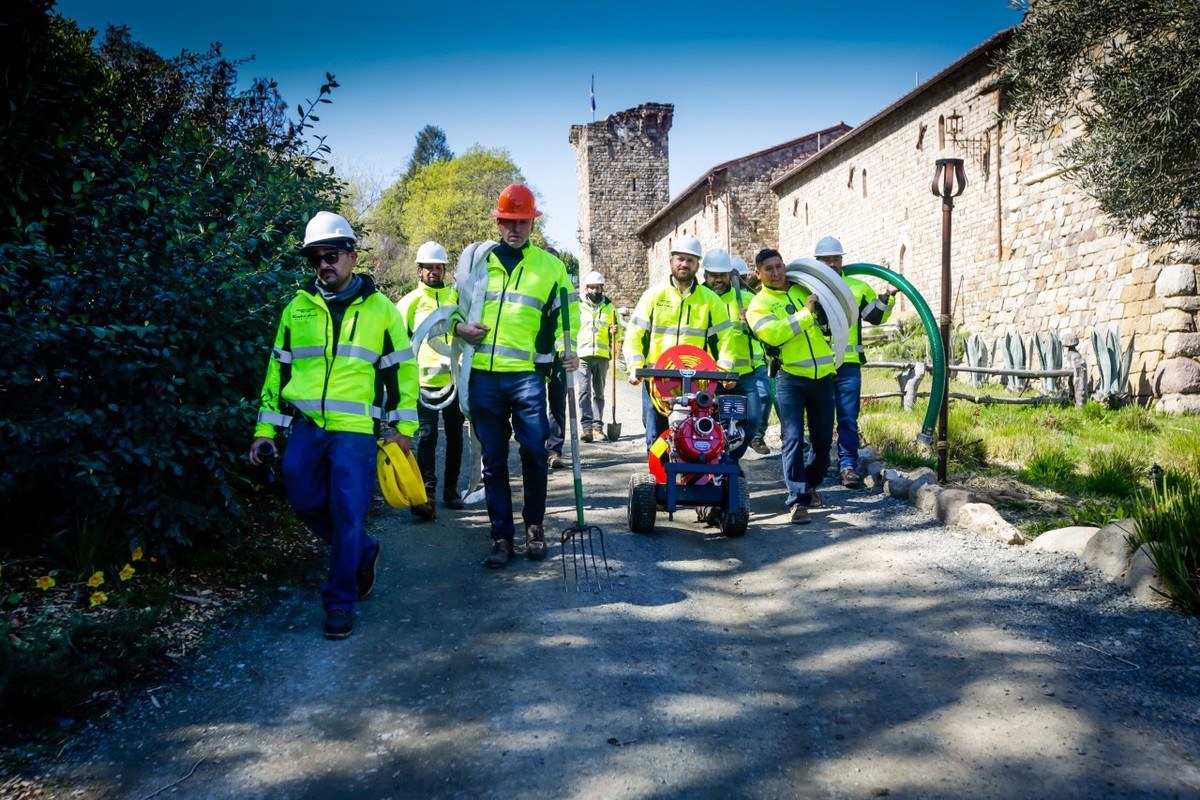
“The Glass Fire hit our Farmhouse so fast,” said Georg Salzner, President of Castello di Amorosa. “We were on site when it struck in the early morning hours, and we did what we could but felt like we could have done more to limit the damage. We could have been more of a resource to the firefighters who were stretched thin that night,” he added.
Salzner organized a fire defense team of 8 long-term employees who know the intricacies of the Castle, its grounds and Dario Sattui’s Victorian home just outside the main Castle gates. This team is known as the “Cavalieri del Fuoco,” which means the Knights of Fire in Italian. This team will establish a fire watch and be ready to respond during Red Flag Warning conditions and will provide support for firefighters. On an ongoing basis they will establish and maintain a defensible space around all structures by removing as much threat from those structures as possible.
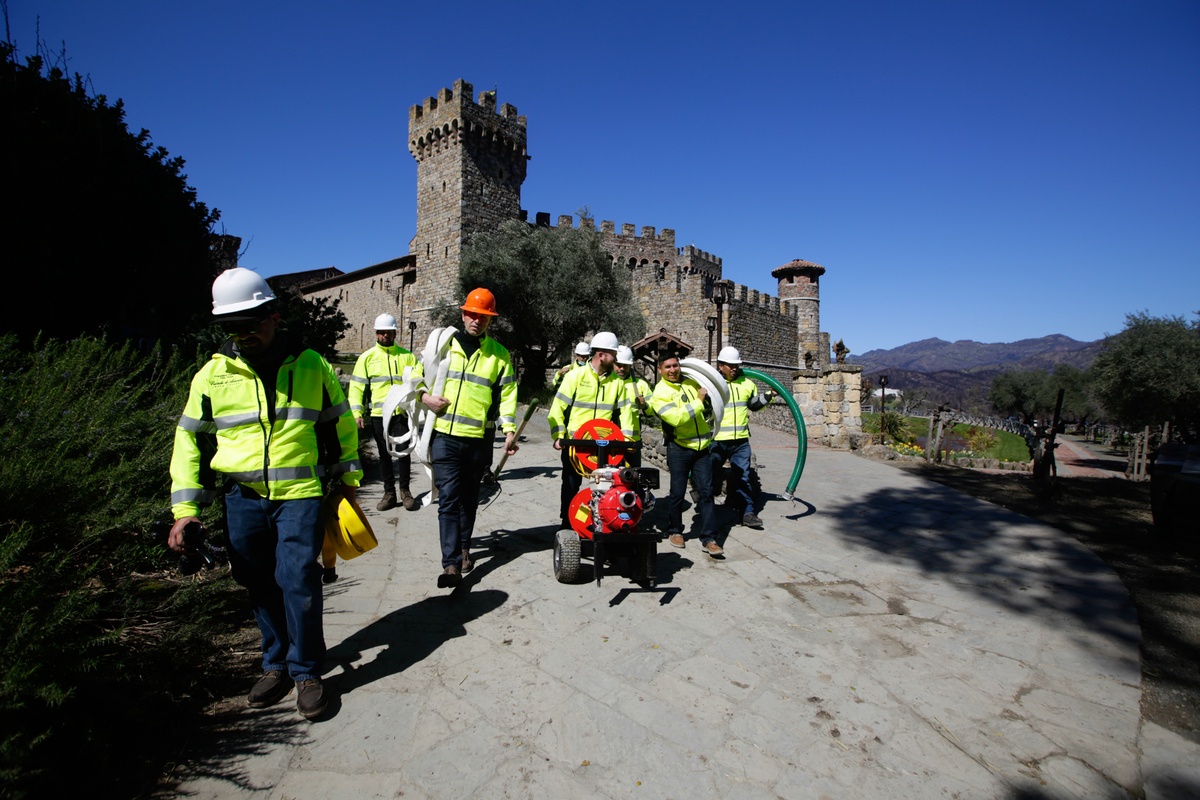
“It is critically important that we implement fire defensive measures now,” Salzner explained. “We’ve outfitted this team with the proper equipment. The entire perimeter of the Castello can be reached by the thousands of feet of fire hose that we purchased which will allow us to support the fire department’s efforts,” he continued.
The Cavalieri del Fuoco is led by Salzner, Tim Dexter, Maintenance Manager and Josh Fairbanks, owner of Fairbanks Mechanical (manages all mechanical systems at the Castello including the fire safety equipment). Long-time employee Carlos Perez is the official Fire Chief of the Cavalieri.
“Our main goal,” explains Tim Dexter, “is to have and maintain a defensible space of 150 feet from all structures to flammable vegetation. Smaller brush, tree trimming (branches lower to the ground) and tree clearing will be done using our newly acquired wood-chipper. This process will eliminate fire fuel sources which will prevent fires from becoming a threat. Regular gutter cleaning will take place in the summer and fall to eliminate fuel sources near roof lines. The new hoses will allow us to water down roof tops as well,” he adds.
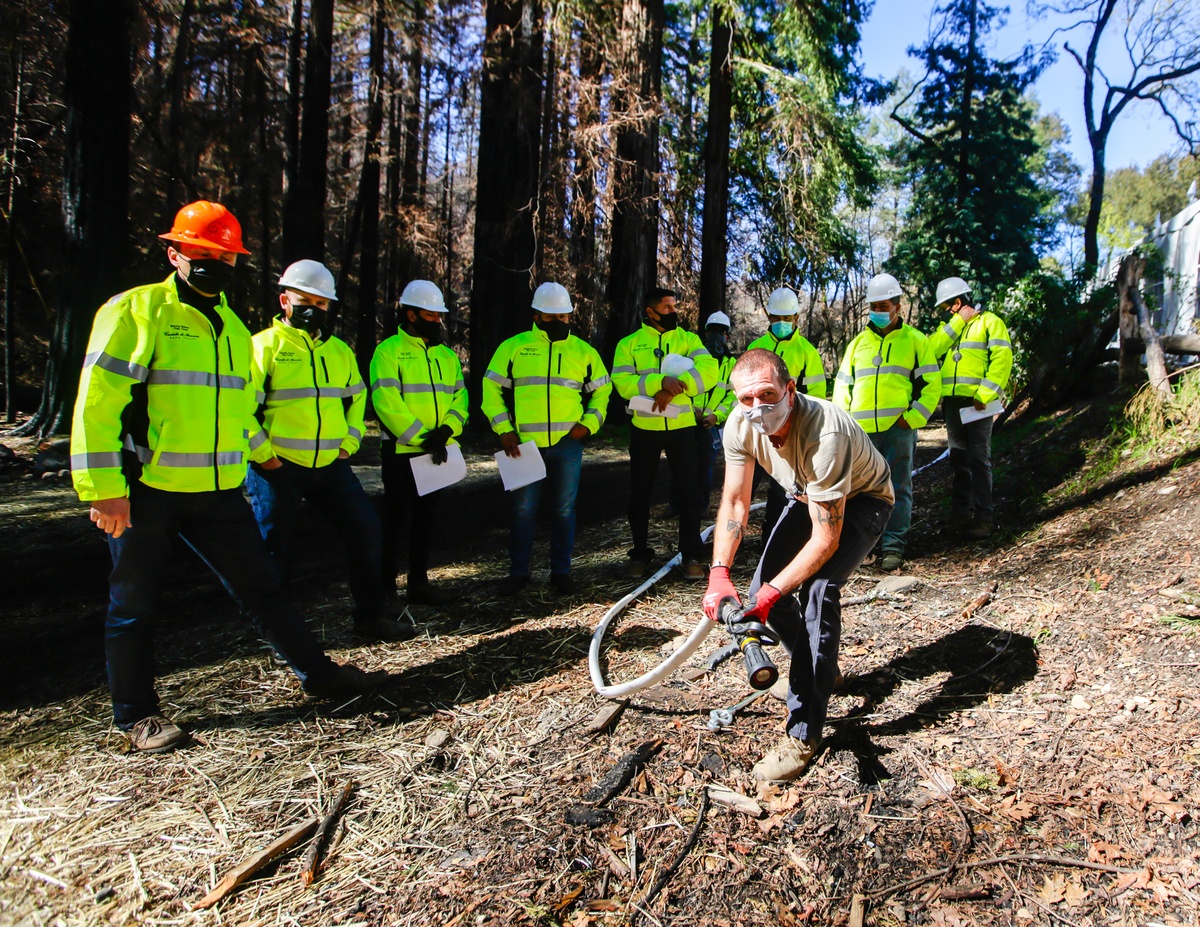
To make the property less susceptible to fire, the Castello invested nearly $100,000 in gear for the fire defense team and equipment which includes a portable water pump that obtains water from the lake, adaptors for the existing fire hydrants, thousands of feet of high-pressure fire hose and nozzles plus custom firefighting gear for the employees.
Each hydrant can be outfitted with dual 4” hose attachments, which allow the use of 1.5” fire hoses. The fire defense team then attaches the hoses to the fire hydrant and can begin to extinguish the fire with a strong water stream which can reach distances of 150 feet.
Castello di Amorosa is one of Napa Valley’s most recognized wineries and welcomes visitors by appointment seven days a week.
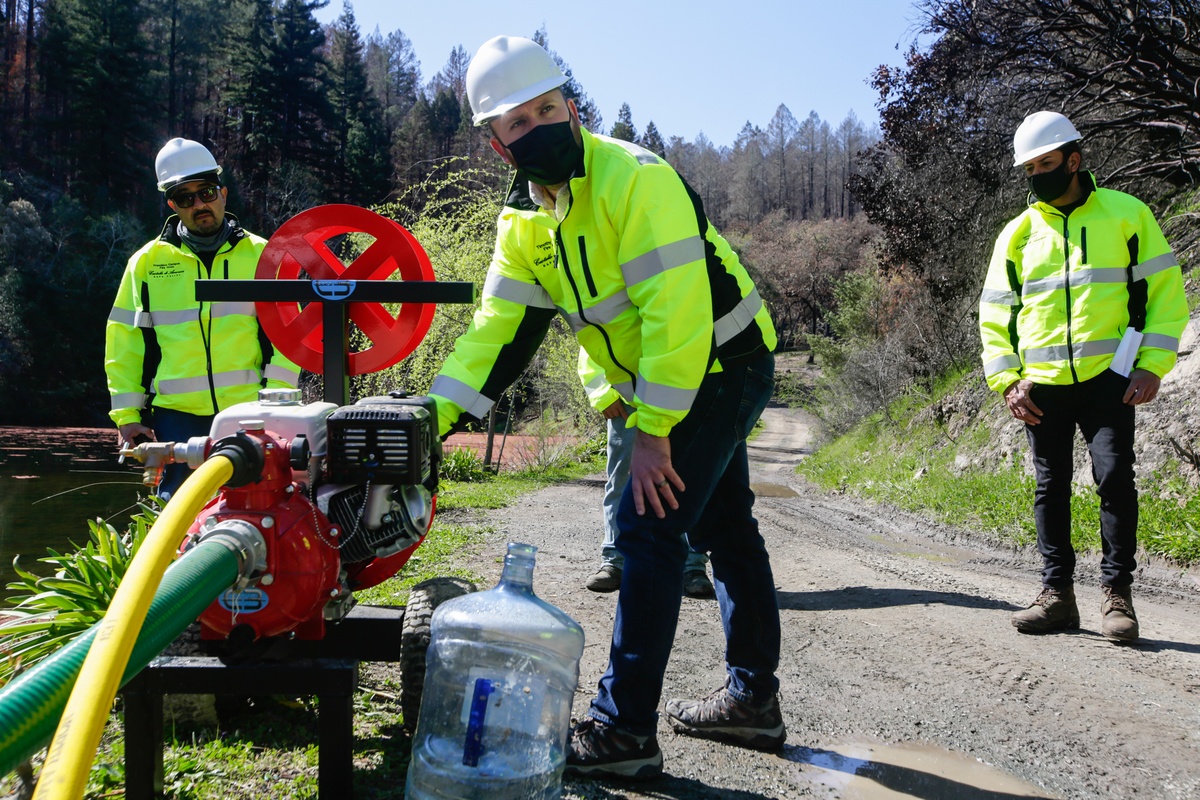
Glass Fire Part I
Read Part 1 of our Glass Fire Blog, featuring a message from Dario Sattui.
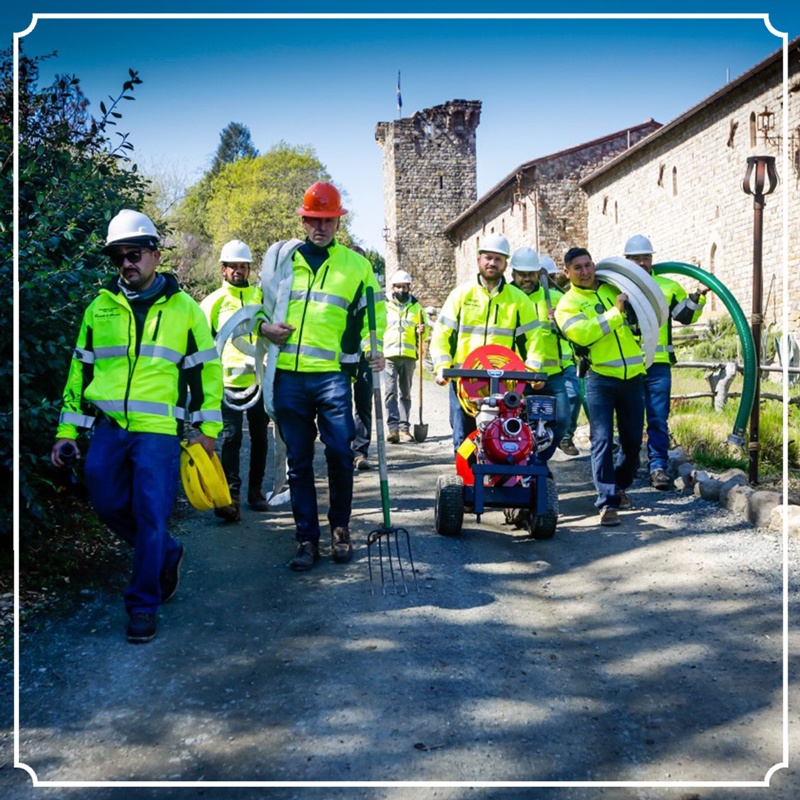
Glass Fire Part II

Jim Sullivan
Jim Sullivan, Vice President of Public Relations and Marketing spearheads Castello di Amorosa’s publicity and marketing initiatives.
With over 20 years of marketing, public relations and business development experience with professional motorsports teams and in a variety of healthcare organizations in Southern California, Jim first joined Castello di Amorosa in 2008 as Public Relations and Marketing Manager.
An avid cyclist, Jim fell in love with wine and wineries while exploring the Washington State countryside. His love of wine was reinforced during subsequent trips to the Napa Valley to visit family.
Jim holds an MBA from the University of Redlands and a Bachelor of Science from Central Washington University. He resides in Calistoga, Calif.
The Clean Up Is Complete
After 1,800 hours of work, the Farmhouse that was burned in the Napa Valley Glass Fire is clean and ready for rebuilding- a 2-to-3-year process- that will utilize same painstaking process that led to the building of Castello di Amorosa, also know as the Napa Castle
Dario hired Zucco Structural Engineers of Santa Rosa to evaluate the existing 10-inch cement walls that are faced with stone and bricks. Zucco were the engineers that produced the original structural plans for the Farmhouse. We are hopeful that the structural report confirms that the walls were not damaged to the extent that they will need to be razed.
Once we have confirmation, we will need to obtain a permit from Napa County to rebuild. We will need thousands of handmade, antique roof tiles, bricks, doors, and metal work from Italy as well as timbers. Artisans from Europe will need to come to Castello to perform the work, to recreate the Farmhouse exactly as it was before the Glass Fire.
In rebuilding the Farmhouse, Dario will reaffirm the two of the original guiding principles used in the building of the Castello. First, the building will be rebuilt authentically. Second, it will be authentic which means it will take time. The rebuilt Farmhouse will not be a contemporary building that mimicked the medieval style. As he would say, you cannot build an “old structure” using modern techniques and tools and it cannot be fake! So, like the Castle itself, you will see hand-shaped bricks, stone, roof tiles and wood used as the building materials.
Fritz Gruber, a master builder, who furnished most of the bricks from Austria will be called on once again in the Farmhouse rebuilding project.
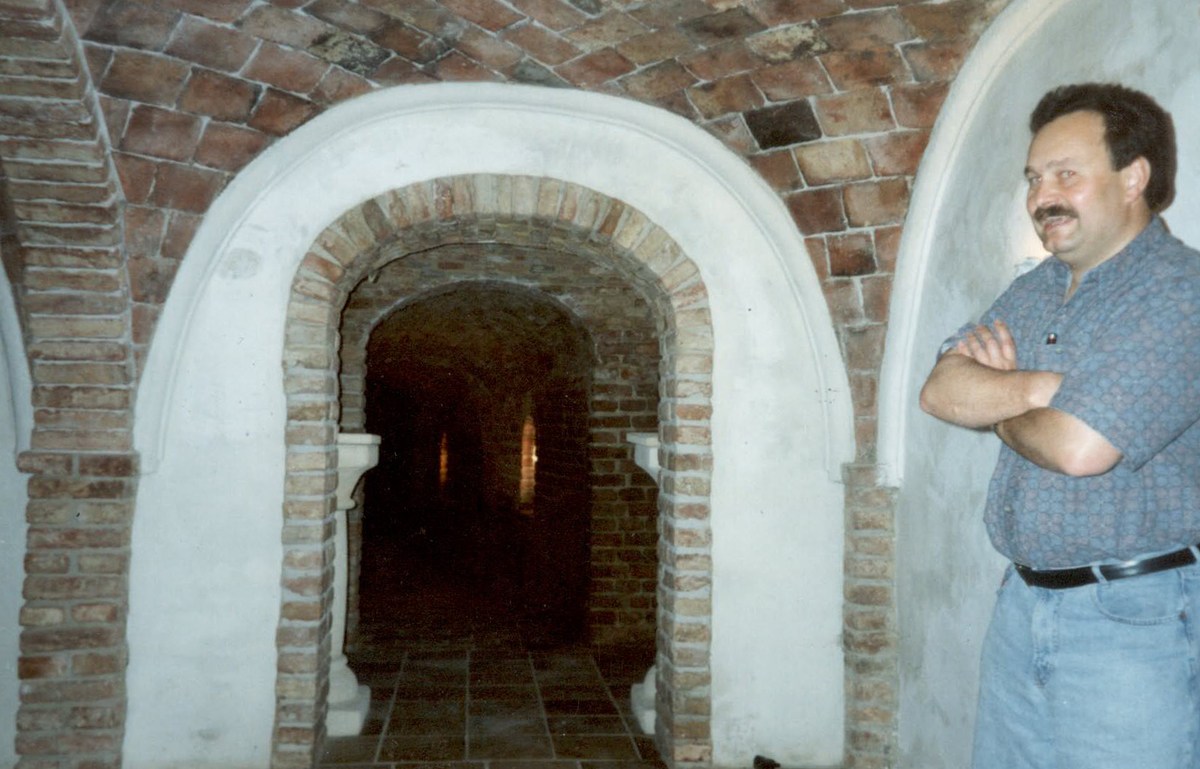
Much of the stone will be sourced locally and worked by masons familiar with old stonecutting techniques. The roof tiles are hand made by artisans in Europe.
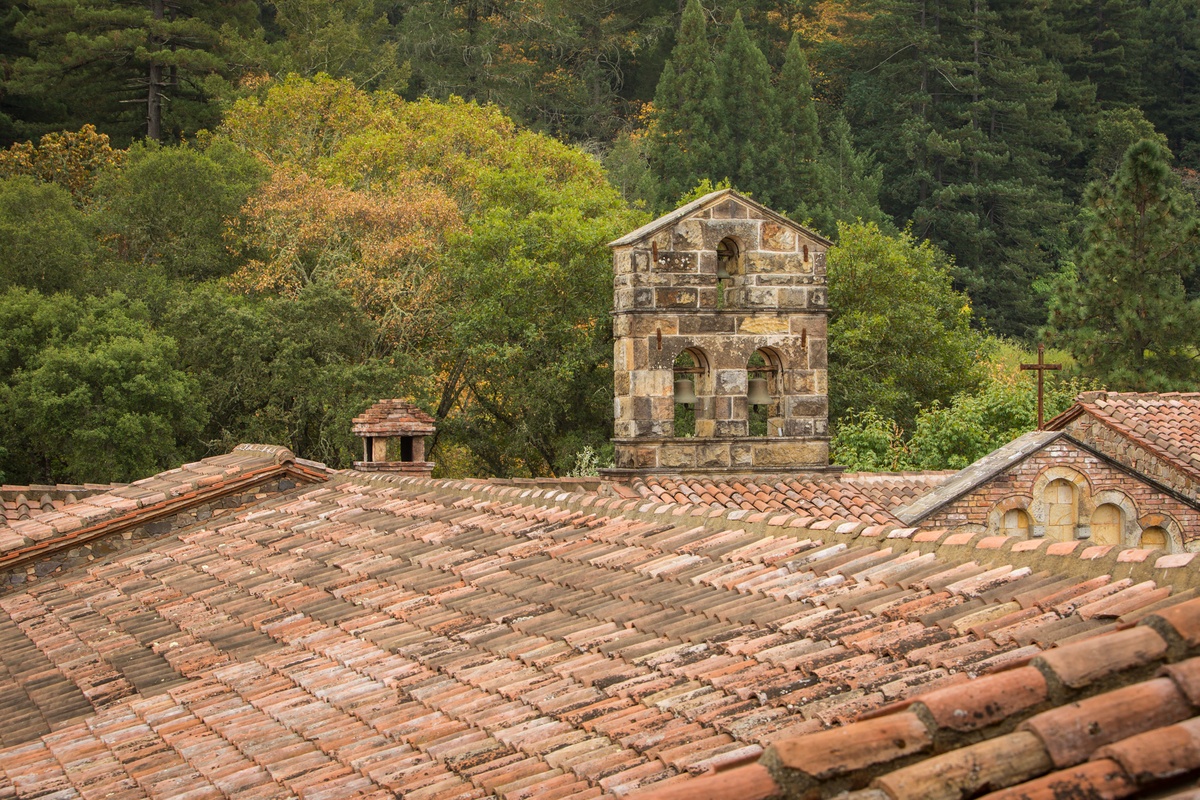
The ironwork including the light fixtures, hinges, locks will all need to be fabricated by Giorgio Mariani, a blacksmith who Dario met in Assisi in 1998, and his son who reside in Umbria, Italy. These talented artisans created the wood doors and window surrounds for the Castle and we will ask for their help, once again, in the Farmhouse project.
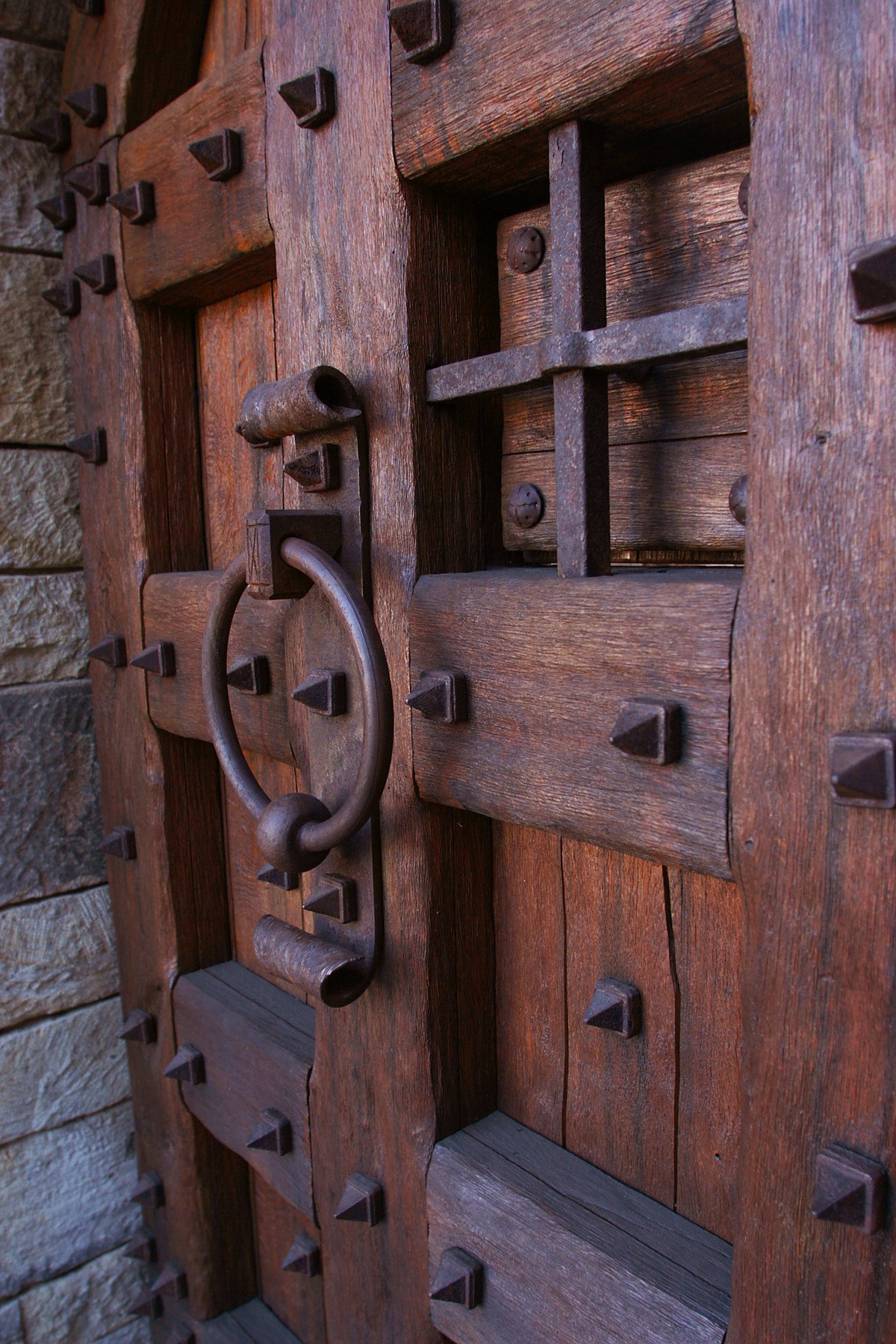
It is likely that the former construction manager of the Castle project, Paulo Ardito will return for the Farmhouse Project. It was Paolo who built the Gatehouse, a tractor barn and office/storage building that is left of the main gate in 2014.
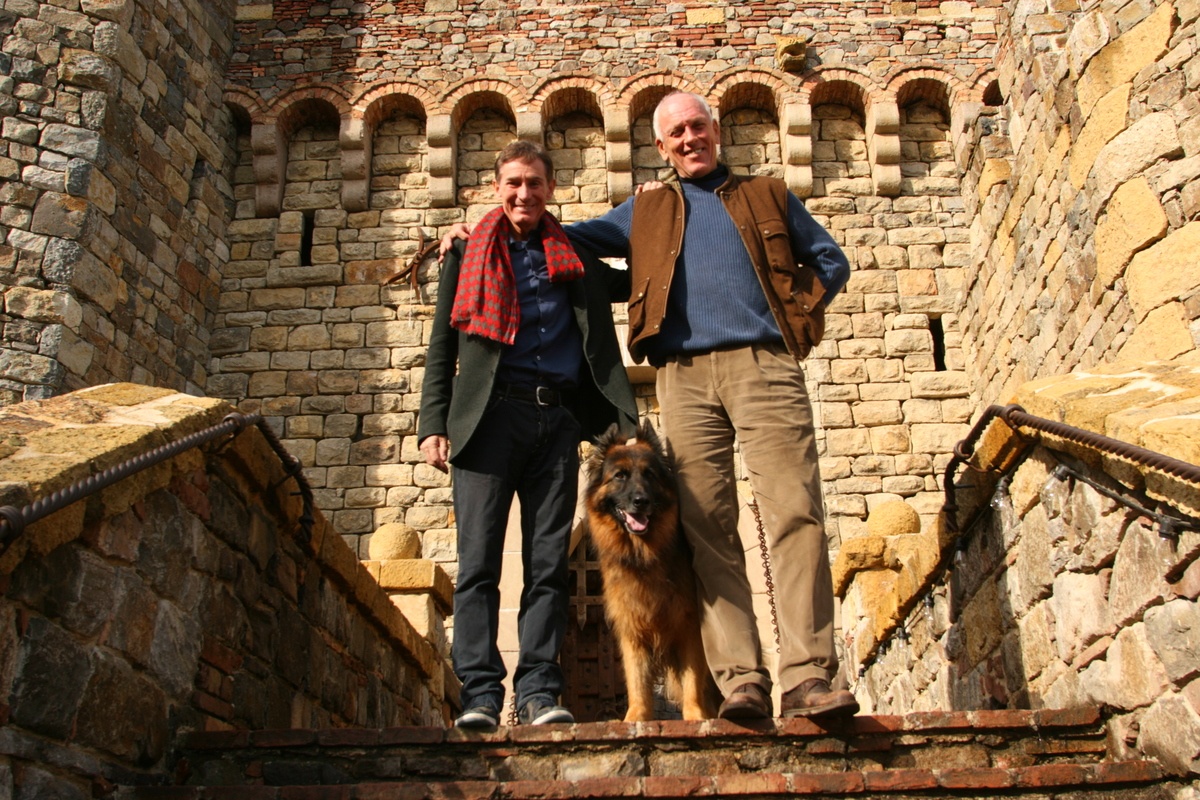
Stay tuned to this blog for the next update. If you have not already done so, please sign up for our newsletter (Hyperlink) to stay up to date with all the latest from the Castello.
Glass Fire Part I
Read Part 1 of our Glass Fire Blog, featuring a message from Dario Sattui.
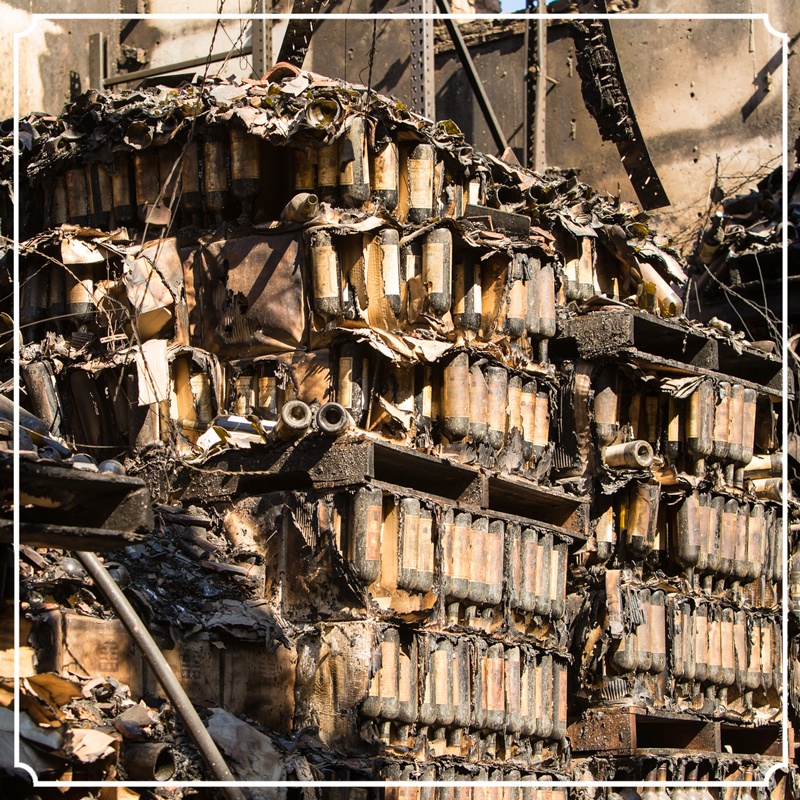
Gordon Ramsey Visits The Castle

Jim Sullivan
Jim Sullivan, Vice President of Public Relations and Marketing spearheads Castello di Amorosa’s publicity and marketing initiatives.
With over 20 years of marketing, public relations and business development experience with professional motorsports teams and in a variety of healthcare organizations in Southern California, Jim first joined Castello di Amorosa in 2008 as Public Relations and Marketing Manager.
An avid cyclist, Jim fell in love with wine and wineries while exploring the Washington State countryside. His love of wine was reinforced during subsequent trips to the Napa Valley to visit family.
Jim holds an MBA from the University of Redlands and a Bachelor of Science from Central Washington University. He resides in Calistoga, Calif.
Gordon Ramsay Visits The Castle
If you have ever watched Gordon Ramsay’s Hell’s Kitchen TV Show, you know that things can get out of hand quickly. That is exactly what happened when Gordon Ramsay and and his pals, Gino and Fred visited the Castle. They filmed Gordon, Gino & Fred: American Road Trip, Summer of Love.
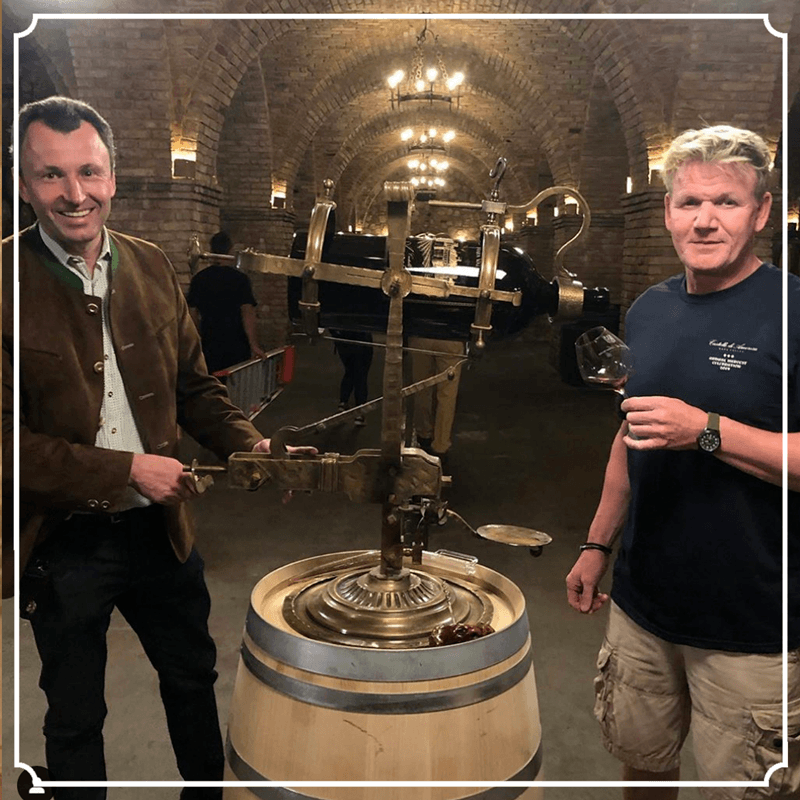
Watch as Gordon, his Italian celebrity chef friend Gino D’Acampo and Fred Sirieix, a french maitre d’hotel, best known for appearing on Channel 4’s first dates and BBC Two Million Pound Menu, set out to find the Castle and taste the wines with their host and owner of Castello di Amorosa, Dario Sattui. While the entire episode is entertaining, you can skip ahead to 28:00 to see Castello di Amorosa.
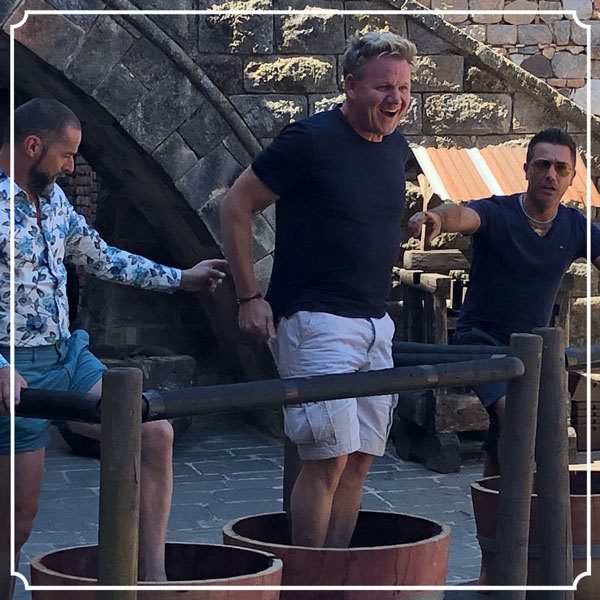
The Fifty Best - California Chardonnay

Jim Sullivan
Jim Sullivan, Vice President of Public Relations and Marketing spearheads Castello di Amorosa’s publicity and marketing initiatives.
With over 20 years of marketing, public relations and business development experience with professional motorsports teams and in a variety of healthcare organizations in Southern California, Jim first joined Castello di Amorosa in 2008 as Public Relations and Marketing Manager.
An avid cyclist, Jim fell in love with wine and wineries while exploring the Washington State countryside. His love of wine was reinforced during subsequent trips to the Napa Valley to visit family.
Jim holds an MBA from the University of Redlands and a Bachelor of Science from Central Washington University. He resides in Calistoga, Calif.
Best California Chardonnay
From the Napa Valley to New York. Castello di Amorosa’s Reserve Chardonnay won a gold medal in the Fifty Best professional wine tasting in New York. Twenty-three premium wine contenders were evaluated for the distinguished “Best California Chardonnay” awards for 2020.
Using professional criteria, the pre-qualified panel of judges blind-tasted the chardonnays and rated them individually on a 1 to 5-point scoring system with 5 being the highest. After tallying the scores, “Best California Chardonnay” medals were awarded based on the judges’ impressions.
Chardonnay is the most widely planted white grape variety, globally. The grape originated in a small village of Chardonnay in France and is now grown throughout the world. Castello’s Reserve Chardonnay is grown in the cool-climate Los Carneros AVA of the Napa Valley.
The wine judges had the following observation of our award-winning Reserve Chardonnay:
Following fermentation, this 100% Chardonnay was aged in 100% new Burgundian French oak barrels for 12 months prior to bottling. Aroma: Green apple, rambutan, lemon peel, minerality, subtle malo, slight oak, buttery. Palate: Bountiful lemon, lemon peel, apple, pear, melon, mango, peach, great tropical fruit, floral, cedar box, balanced oak, buttery, buttered popcorn, creamy, vanilla, smooth, crisp, classic California chardonnay. Finish: Ripe lemon, lime, mango, papaya, oak, vanilla, creamy, soft, balanced.
The complete results, along with tasting notes of the best chardonnays in California, can be viewed here:
https://www.thefiftybest.com/wine/best_california_chardonnay/
TheFiftyBest.com is a digital guide to wines & spirits, featuring rated listings resulting from proprietary blind tastings as judged by wine/spirits journalists, sommeliers, wine/spirit retailers, mixologists, wine consultants and connoisseurs. The Fifty Best achieves the highest standards of spirits evaluations by adhering to strict tasting rules and rigorous methodology.
